Kenzo Presents Its Fall/Winter 2022 Women’s And Men’s Collection By Nigo
Luxferity, 19.07.2022
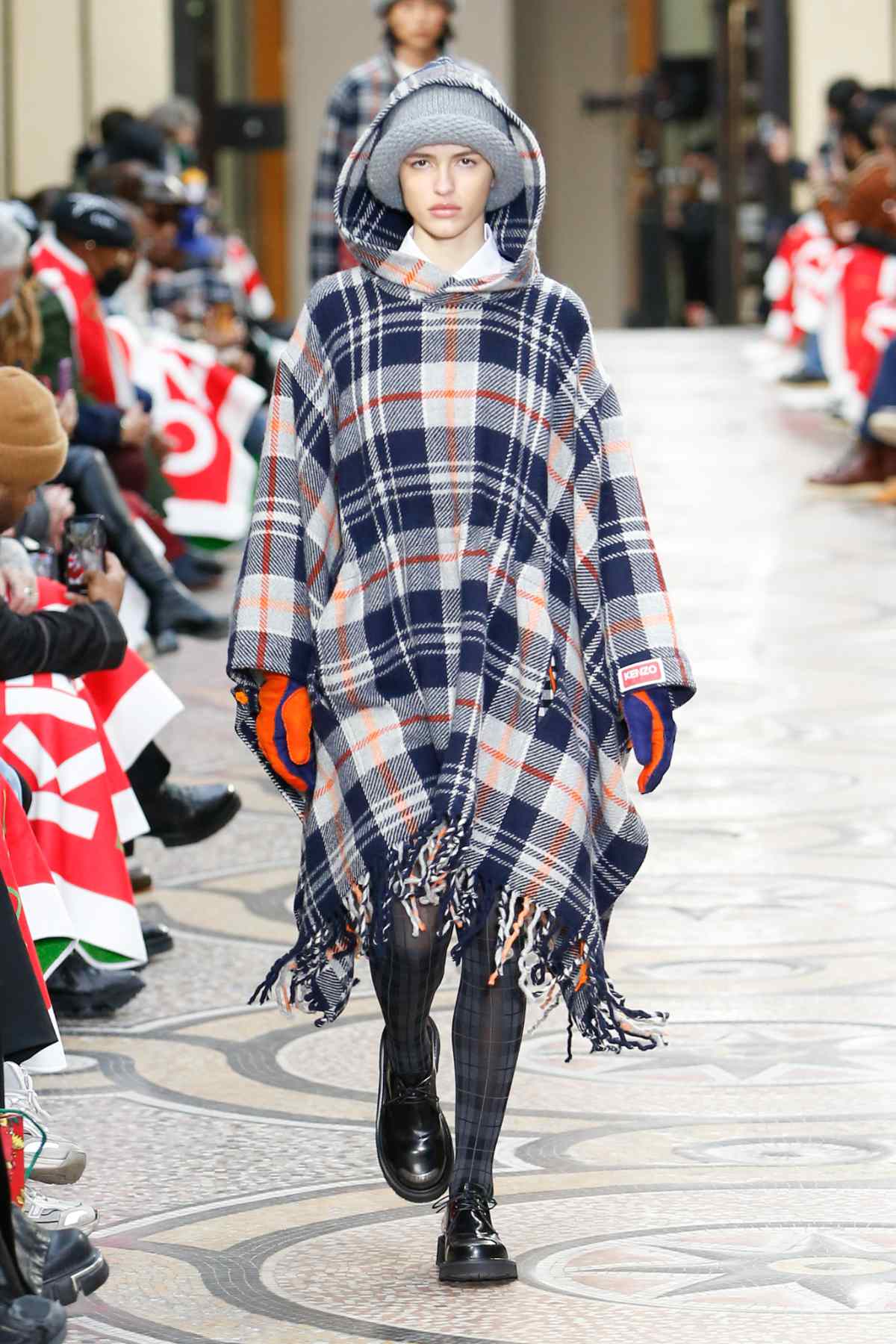
REAL-TO-WEAR: an authentic wardrobe founded in a forward-thinking approach to fashion. The KENZO Fall-Winter 2022 Women’s and Men’s Show marks the debut of Artistic Director Nigo, the first Japanese designer to front the house since its founder Kenzo Takada. With his first collection, Nigo introduces his vision for KENZO: a meeting between the Maison’s heritage and his own contemporary codes. In 1970, the year Nigo was born, Takada presented his inaugural fashion show in the Galerie Vivienne on the backdrop of his new shop, Jungle Jap. Five decades later, Nigo makes his own debut for KENZO in the same arcade, envisioning it as a tunnel toward the future and beyond the borders of fashion. The show soundtrack features an exclusive preview of the designer’s upcoming album I Know Nigo with contributions from A$AP Rocky, Kid Cudi, Pharrell Williams, Pusha T, Teriyaki Boyz, Tyler, the Creator and Lil Uzi Vert.
Nigo and Kenzo Takada share an inherent cultural language – an understanding of the synthesis between Japanese and Western wardrobe traditions – but it’s their attitude to fashion that connects them above all: a belief that what you see on a runway should manifest in real life. In keeping with this philosophy, Nigo is building one continuous brand story at KENZO: a considered wardrobe gradually drip-fed through monthly limited-edition drops rooted in Kenzo’s heritage and his own practice. While Takada was building his Maison in Paris, Nigo was playing out his teenage years in Japan amid the subcultural 1980s’ revival of 1950s’ Americana. Amplified by the country’s post- WWII links with American culture, the style would go on to underpin the designer’s aesthetic and draw a natural line between the Japanese-Western territories occupied by his work prior to KENZO.
In his first collection for the Maison, Nigo fuses the influences of his own upbringing and career with the heritage of Kenzo Takada, writing a language for the Maison that looks to the future by learning from the past. Melding the grammar of the archives with that of his own sensibility, the Artistic Director creates a premise that unites and transcends cultural and conventional dress codes. Traditional ideas of formal-, sports- and “streetwear” splice into one logic: real-to-wear, exercised across women’s and men’s wardrobes, which mix tailoring and workwear, both cutting a genderless silhouette.
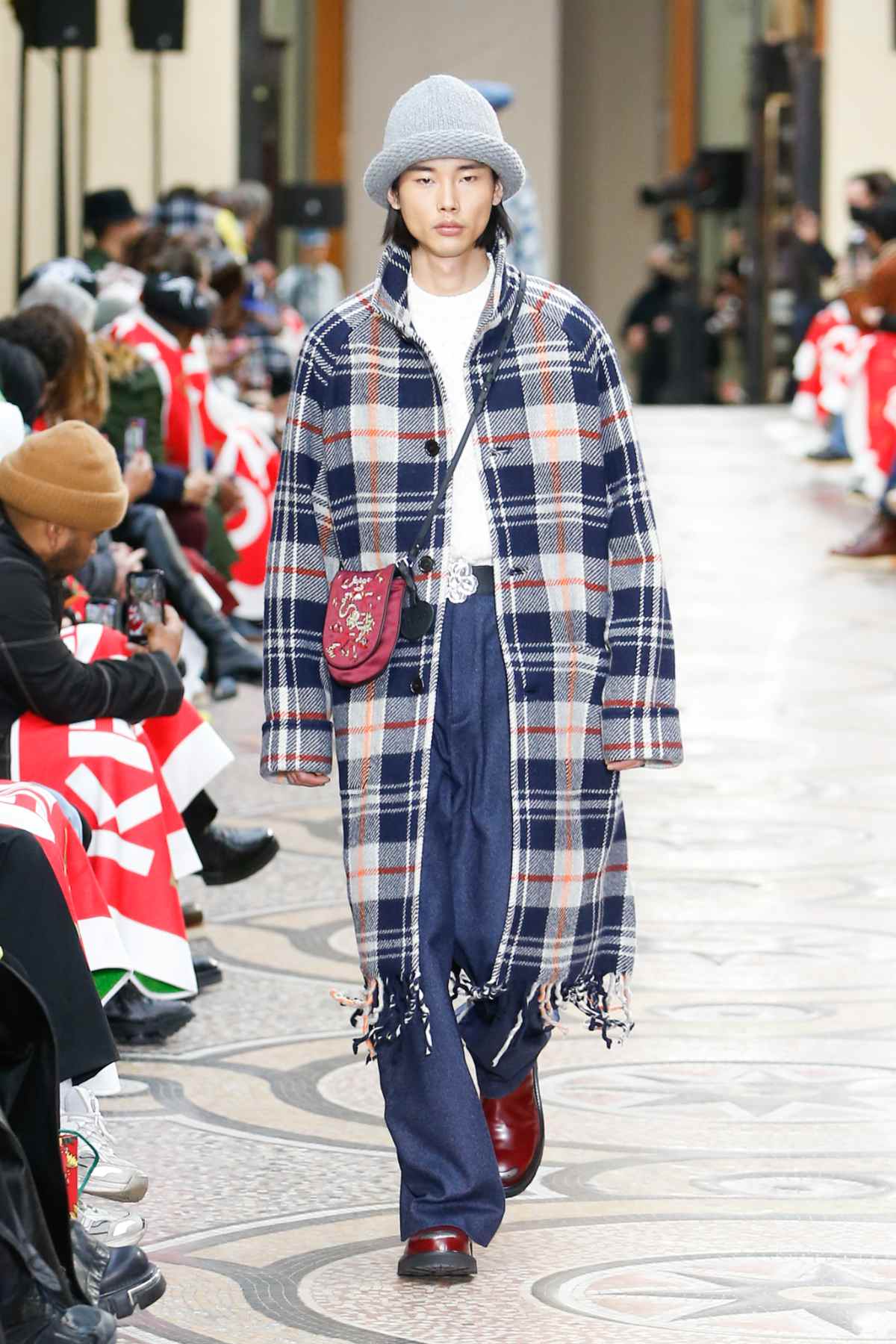
Jackets
The collection approach paves the way for a heightened study of pieces over looks, each imbued with the Japanese-Western premise of the collection. Souvenir bomber jackets inspired by those historically commissioned in kimono fabrics by the American occupying forces in Japan are reversible: the wool side features a map-of-France embroidery, while the silk side is embellished with a map of Japan. Nylon aviation jackets lined in shearling continue the US military theme, while varsity jackets and graduation jackets (white coats on which graduates would collect the hand-written messages and scribbles of their classmates) represent Nigo’s deep understanding and collecting of the “Ivy” framing of Japanese appreciation of US youth dressing traditions. The graduation jackets are covered in prints of Kenzo Takada’s original sketches.
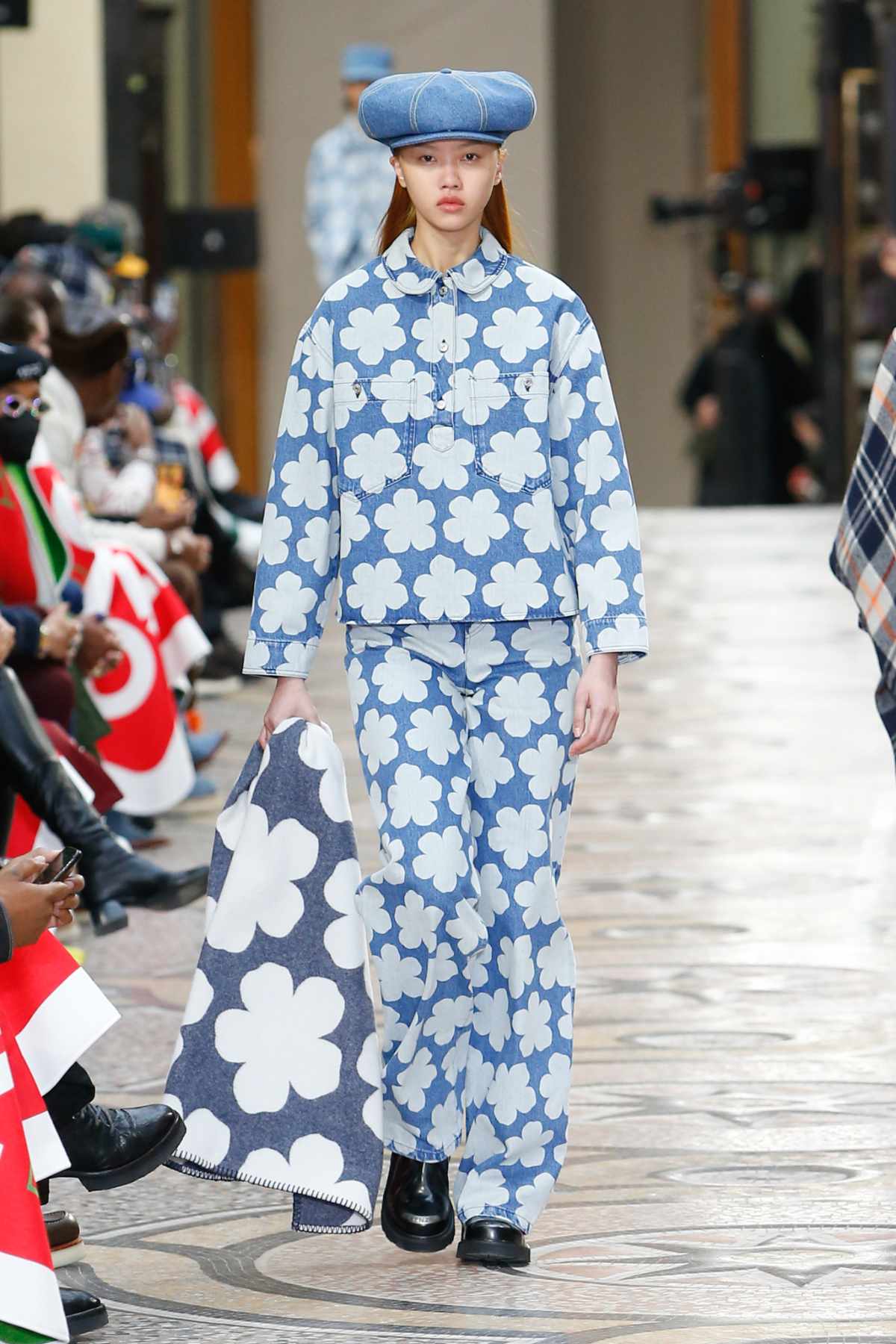
Tailoring and workwear
Deconstructed tailoring is largely informed by the archives of Kenzo Takada. Suits in the Prince of Wales checks and pinstripes employed by the founder are interpreted in washed wools. His three-button jacket enters into a dialogue with Nigo’s affinity for the subversive sartorialism of British subcultures – also revived in 1980s’ Japan – echoed in mid-length Harris Tweed coats and checked biker jackets. Sturdy coverall jackets and workwear emblazoned with the elegant archival Poppy Print reflect Nigo’s idea of “impractical workwear”: self-contradictory clothes founded in the reality of a contemporary approach to dress codes.
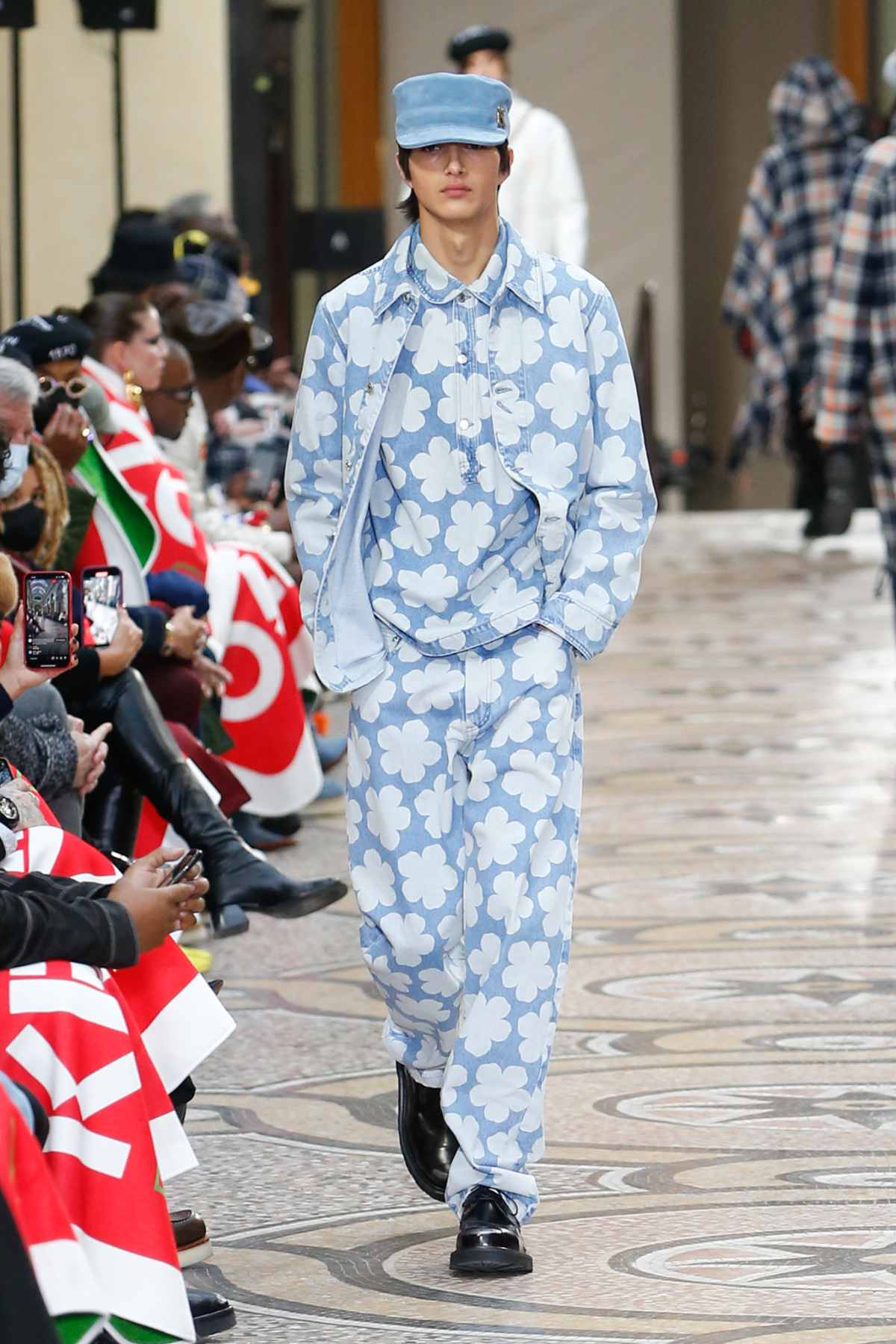
Japanese construction
Nigo, who is currently learning the art of Aka-e pottery from the master potter Fujimura Shuji – a style that resembles that of the Kutani-Yaki craft – adorns garments in remixes of the decorations hand-painted by his teacher. The motifs go hand-in-hand with tailoring garments inspired by the “workwear” worn by Japanese potters: samue, bib-like tops with lines evocative of the kimono structure layered with a traditional hanten which becomes a wrapped coat in double-faced wool or a cropped jacket in wool flannel for women and men. This form language hybridises into a kind of dresses and salopettes, while apron-like garments worn for the practice of the tea ceremony incorporate folds in which practitioners traditionally place the tools used in their art.
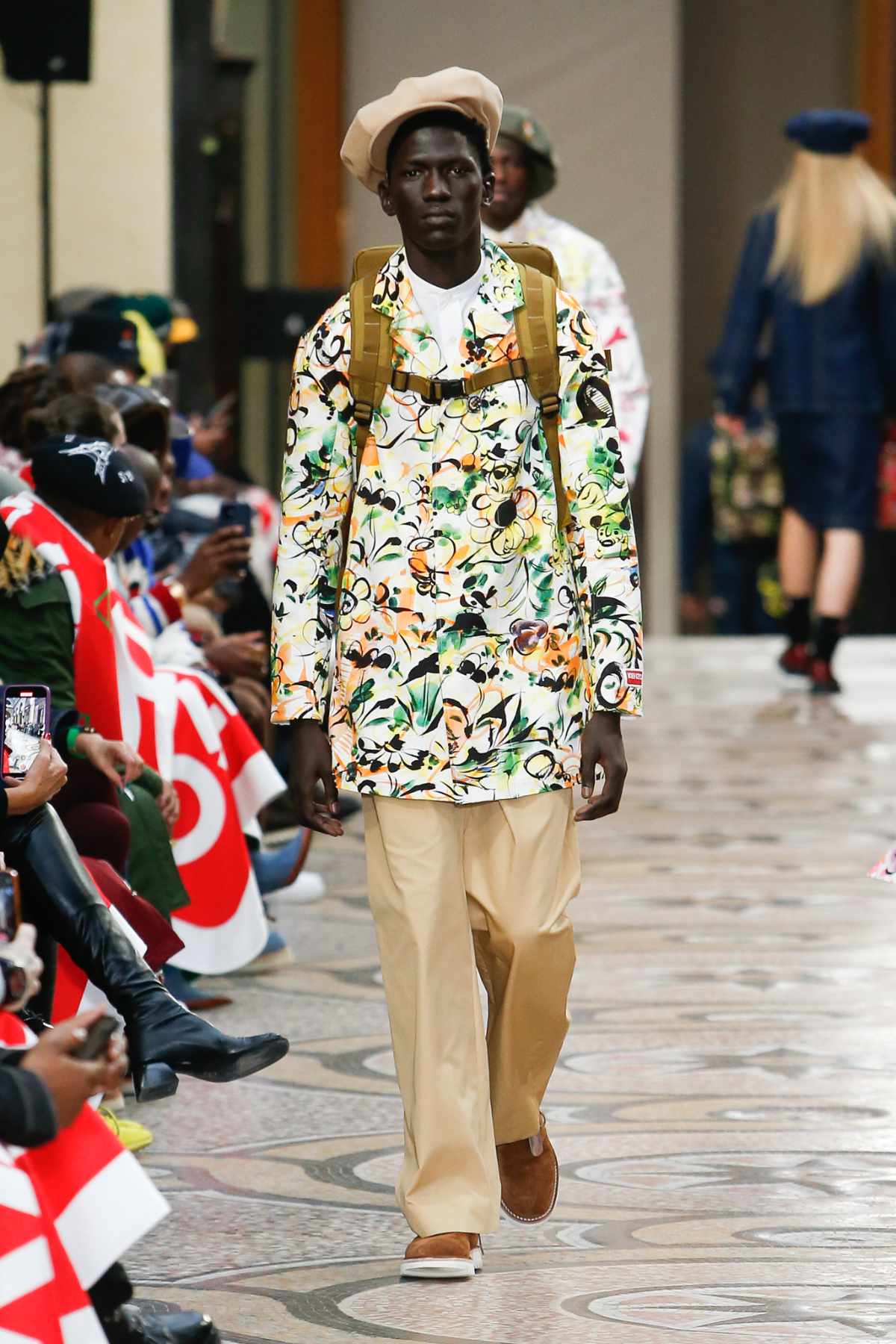
Japanese denim
Echoing the duality of the collection, denim pieces using Japanese denim represent a balance between the rugged and the very refined. Denim trousers, jackets and salopettes with yellow topstitching are
structured in generous volumes founded in the workwear silhouette, and manifest in clean washes, brut, or stonewash with pigment-printed flowers.
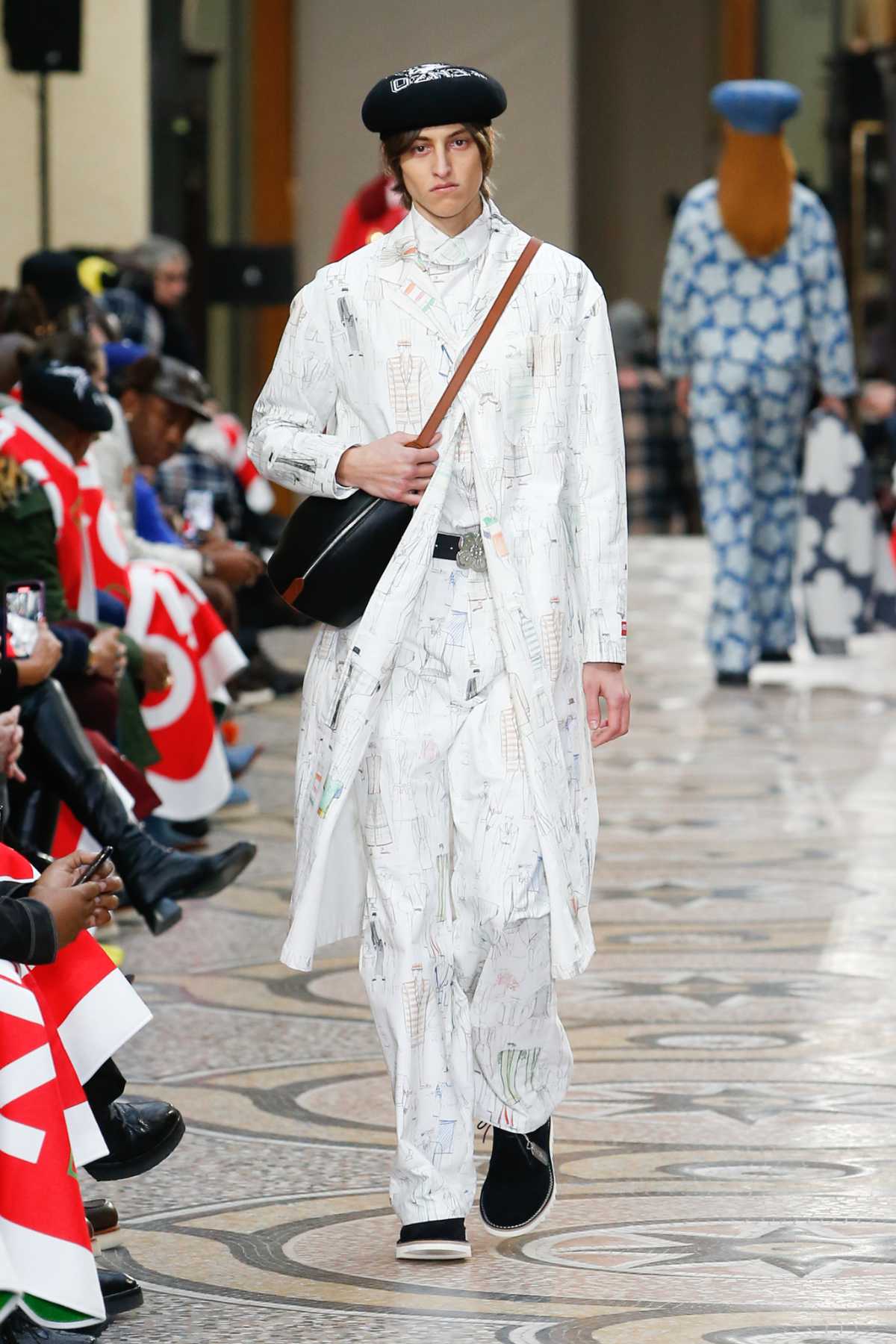
Knitwear
Knitwear interprets the vibrancy of the KENZO heritage through the graphic lens of Nigo, creating an expression rich in colour and texture. Kenzo Takada’s sculptural collars enter into the lines of knitted tops and manifest as maxi-snoods. Fair isle is animated through a Kenzo sensibility in jumpers, cardigans, vests, dresses, and leggings. Chunky American college jumpers are emblazoned with varsity patches, the Poppy Print, and the Boke Flower motif created by Nigo. The designer interprets the Maison’s tiger in a new Aka-e Tiger watercolour motif, a Tiger Varsity graphic, and in tiger stripes which appear across garment categories.
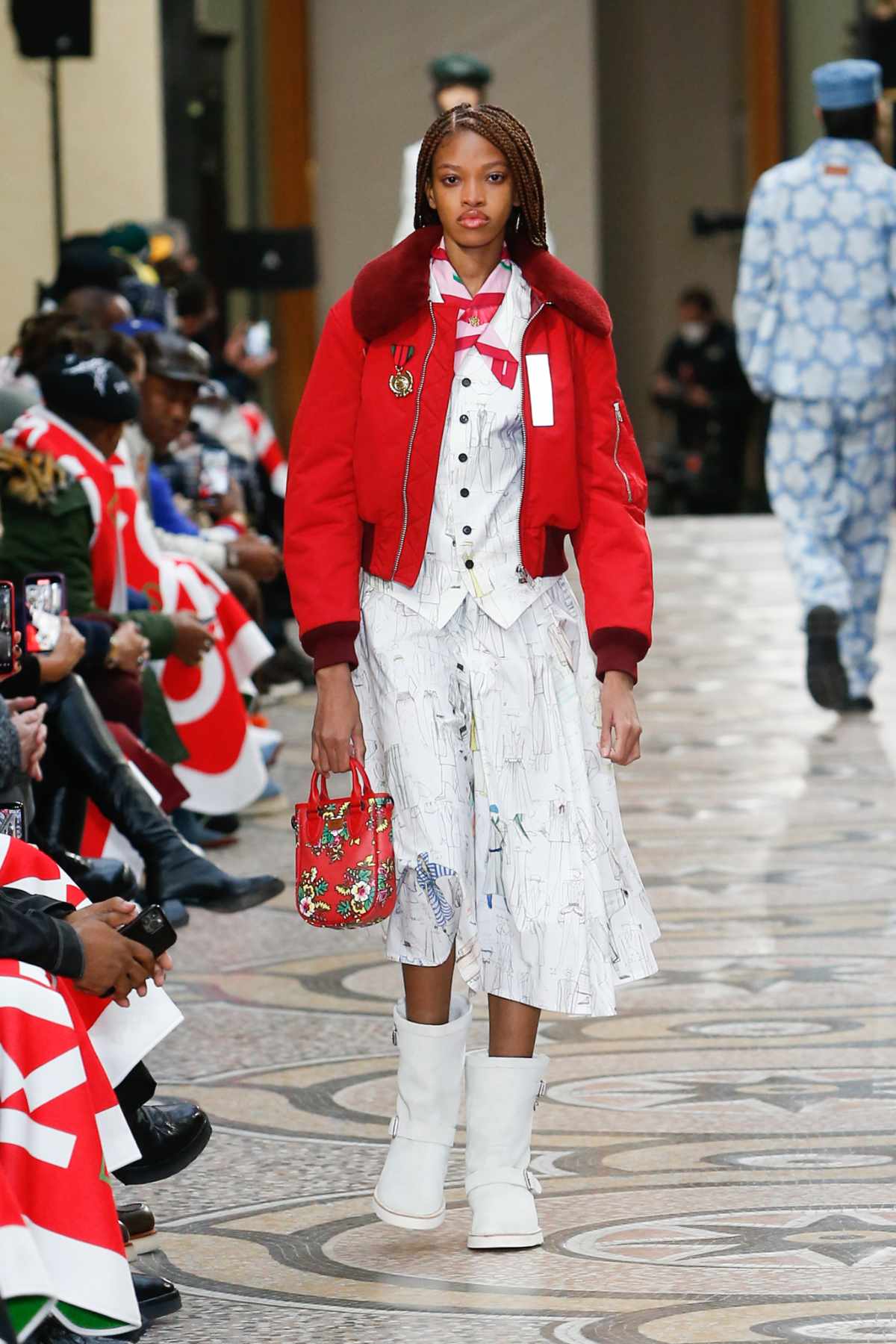
Accessories, shoes and bags
In accessories, the Artistic Director – whose design practice often involves animal graphics – revives the feline stuffed-animal scarves of Kenzo Takada. Oversized casquettes and field caps interpret American classics through a Japanese lens. True to the collection’s idea of “impractical workwear”, desert boots and work boots fused with brothel creeper soles are embellished with flower prints. Bags reimagine designs found in the KENZO archive and cover them in the archive Pop Bouquet flower print and the Temari Monogram, a new geo-pattern. Reversible pouch bags imitate the map embroideries of Japan and France illustrated in the souvenir jackets. As a tribute to the founder, medals used as ornamentation on garments are forged in the signature profile of Kenzo Takada himself.



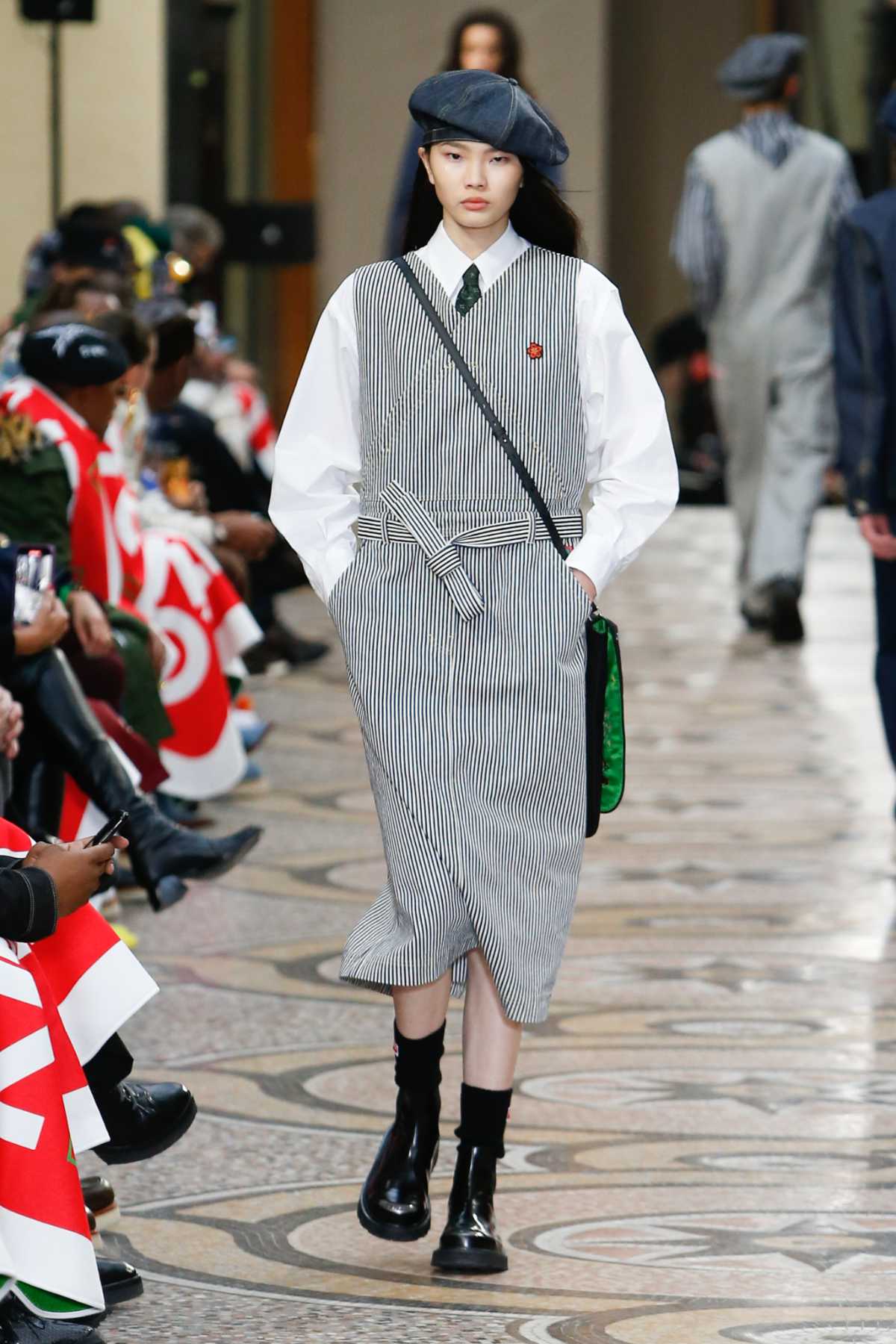
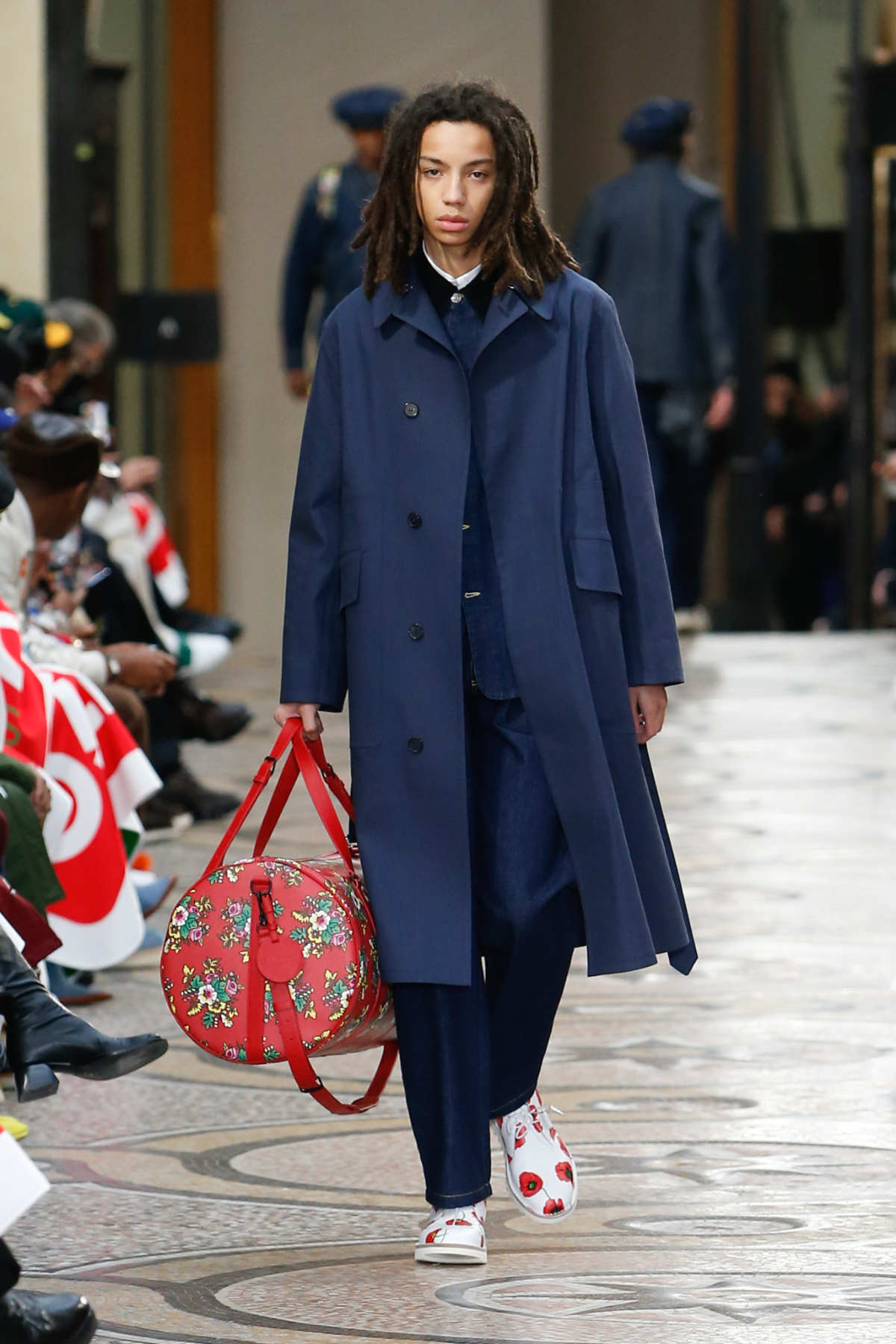
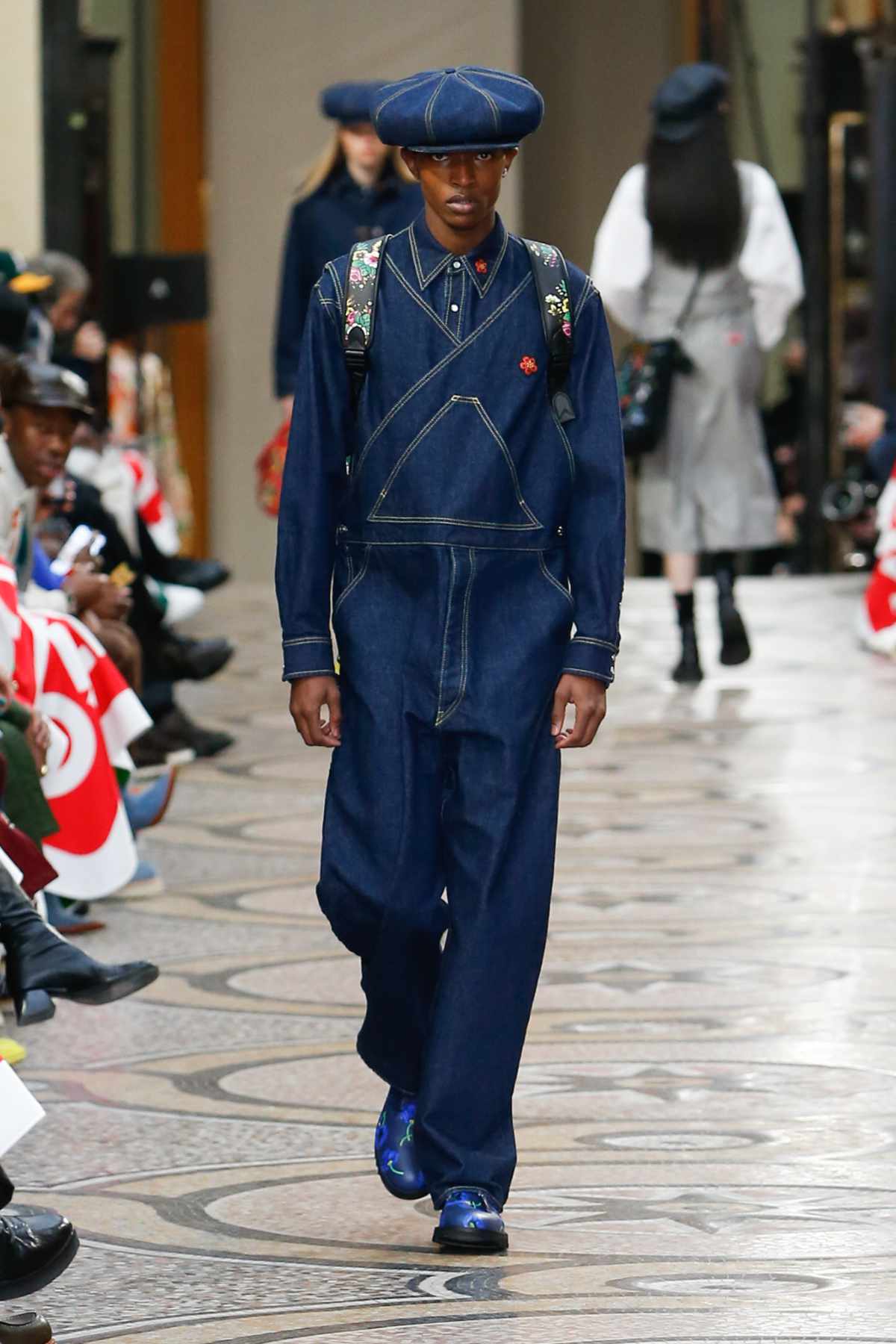
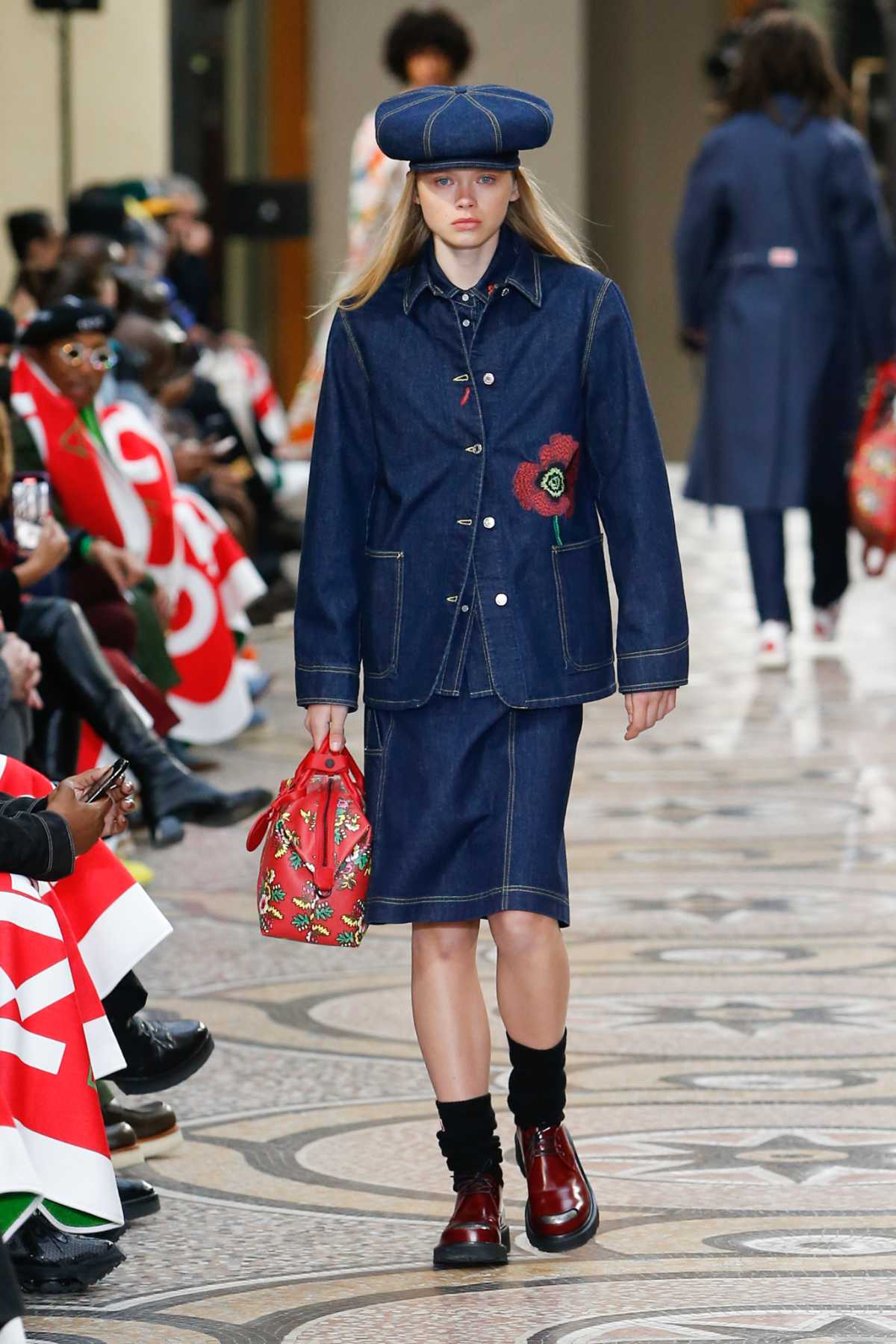


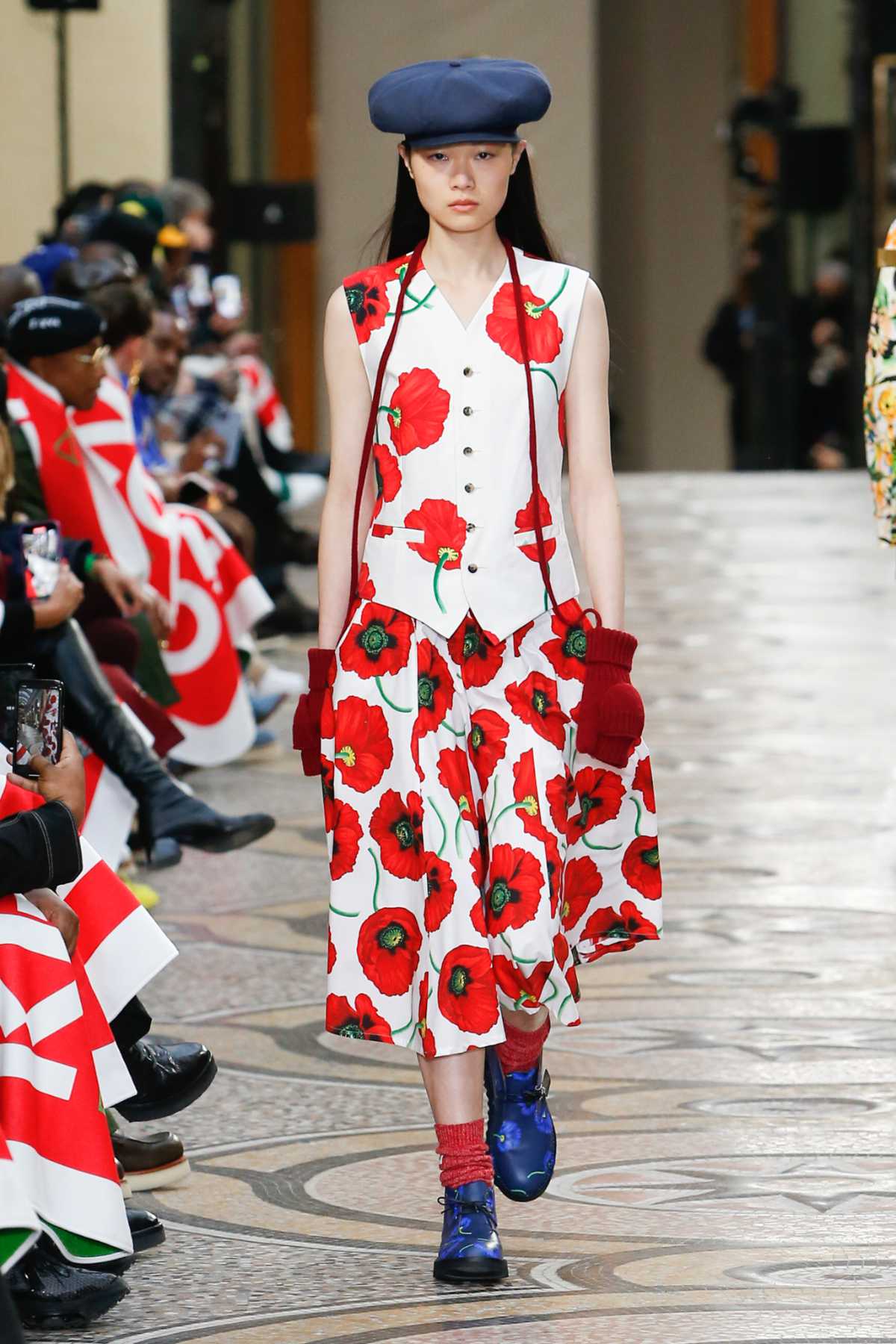

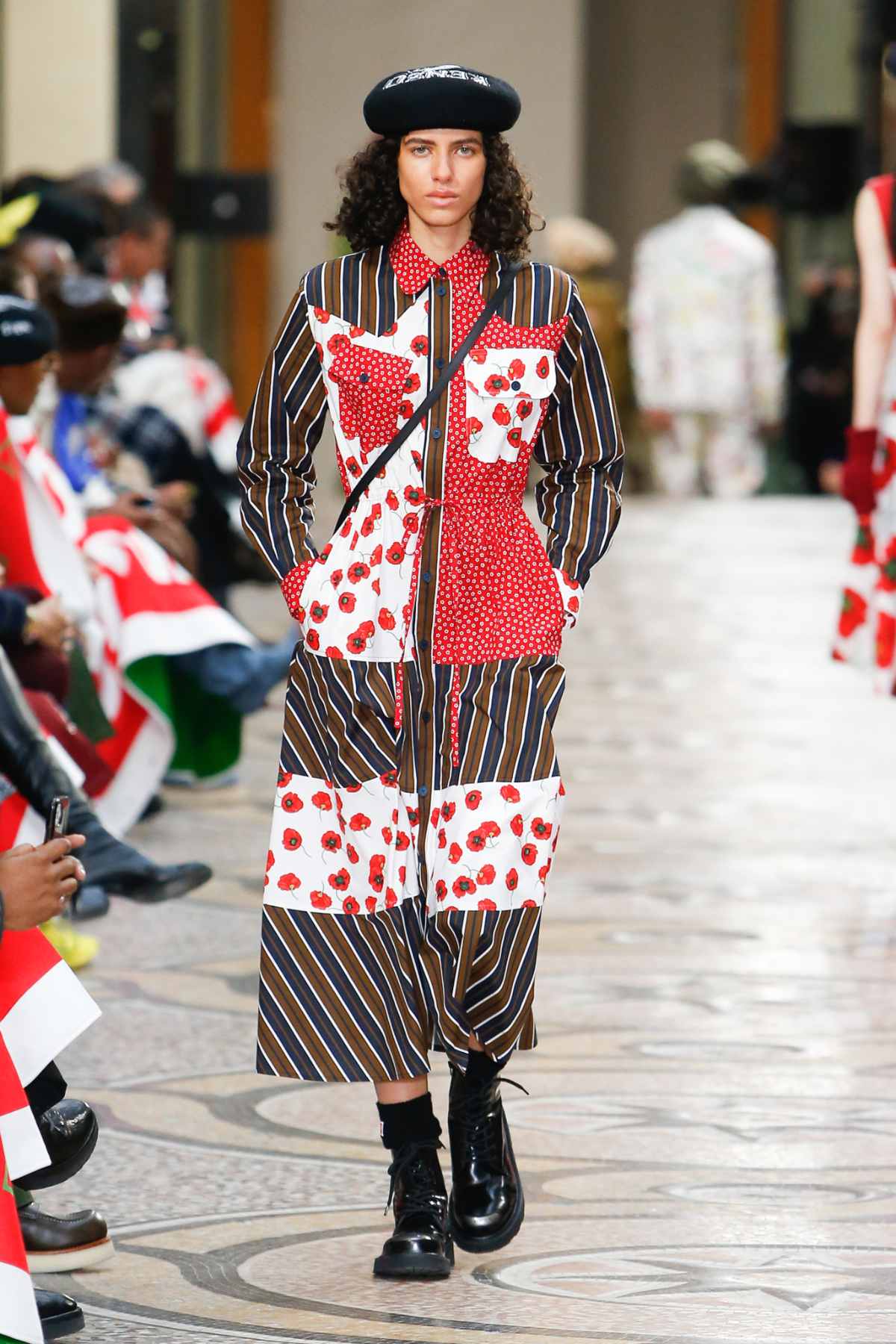
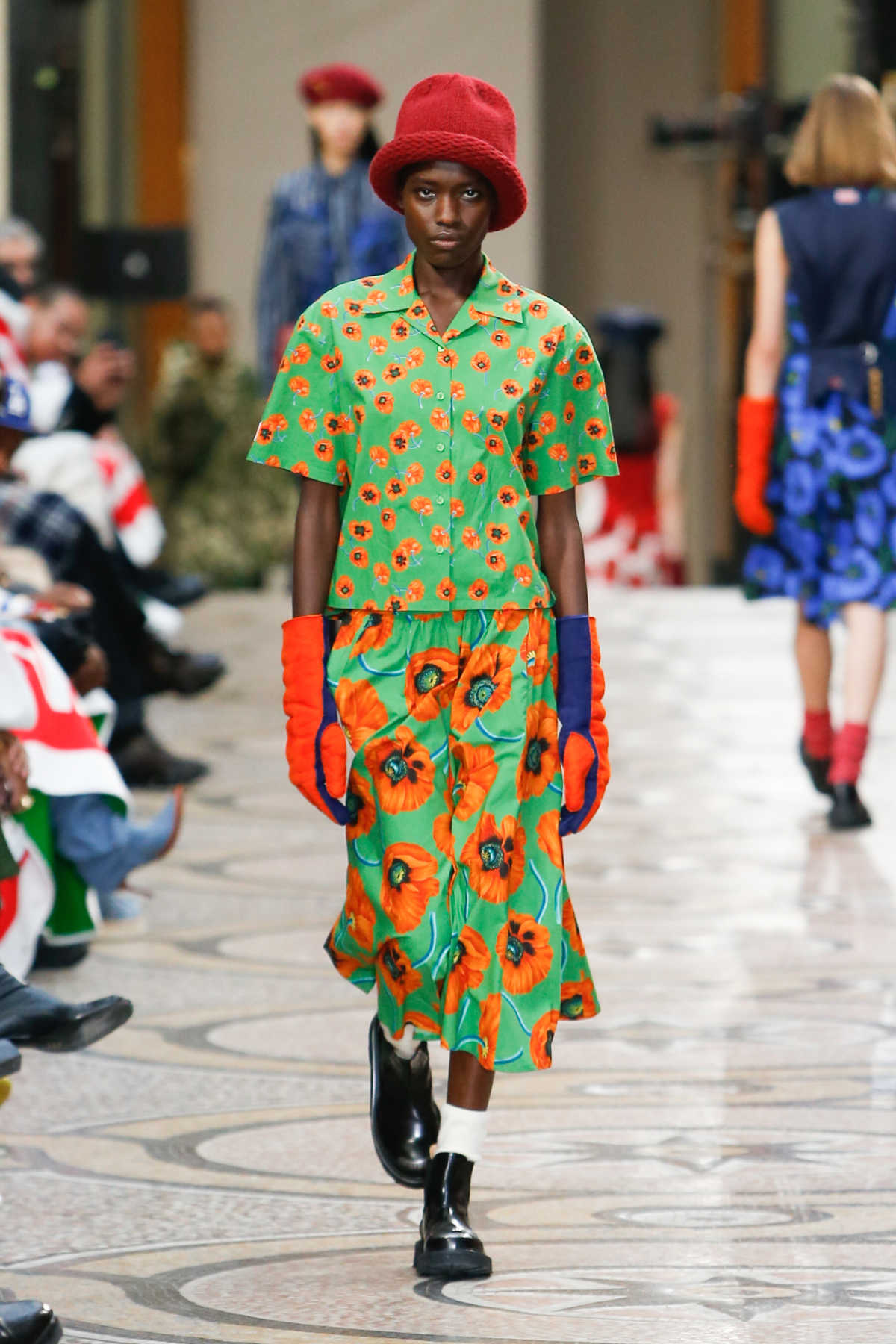
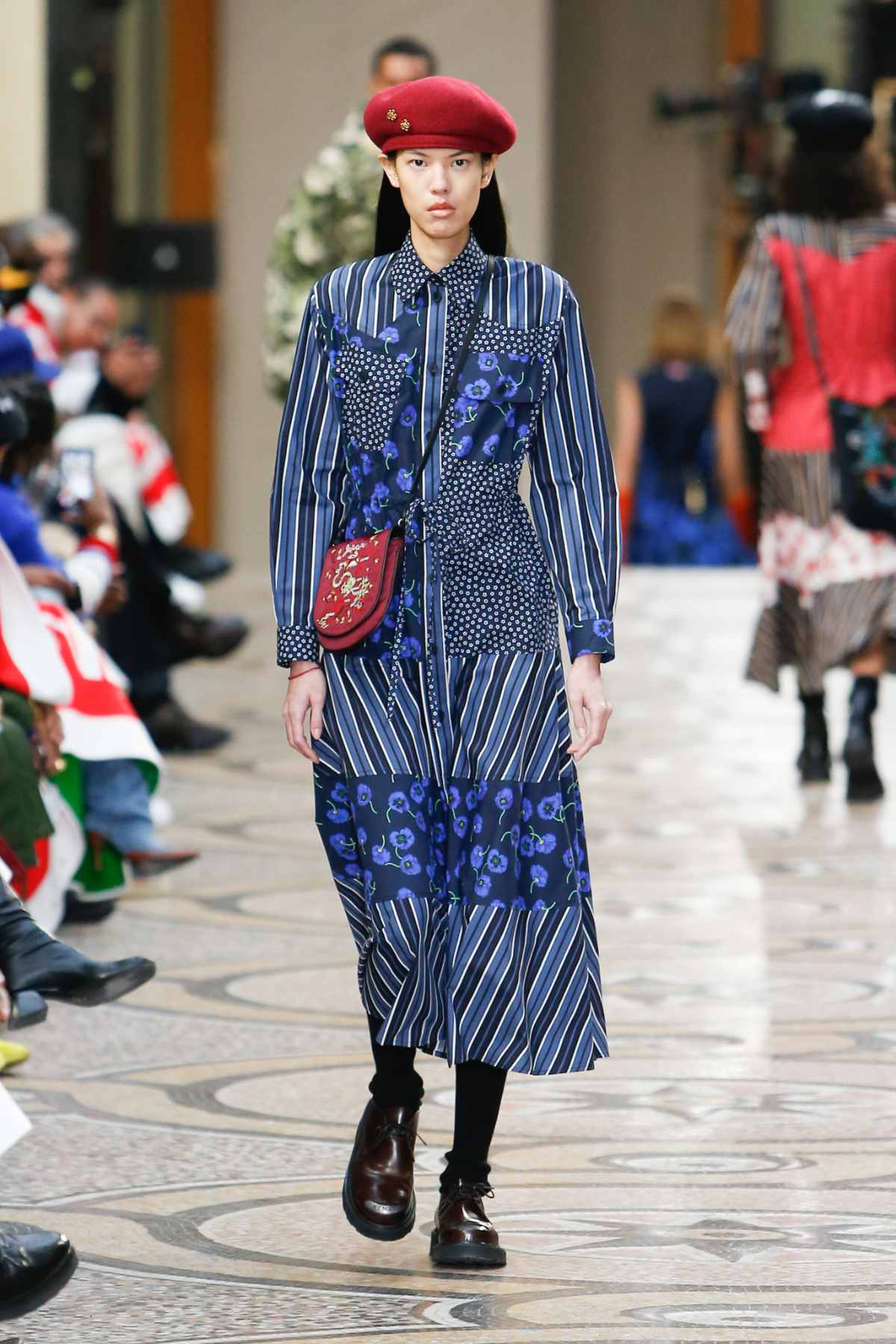
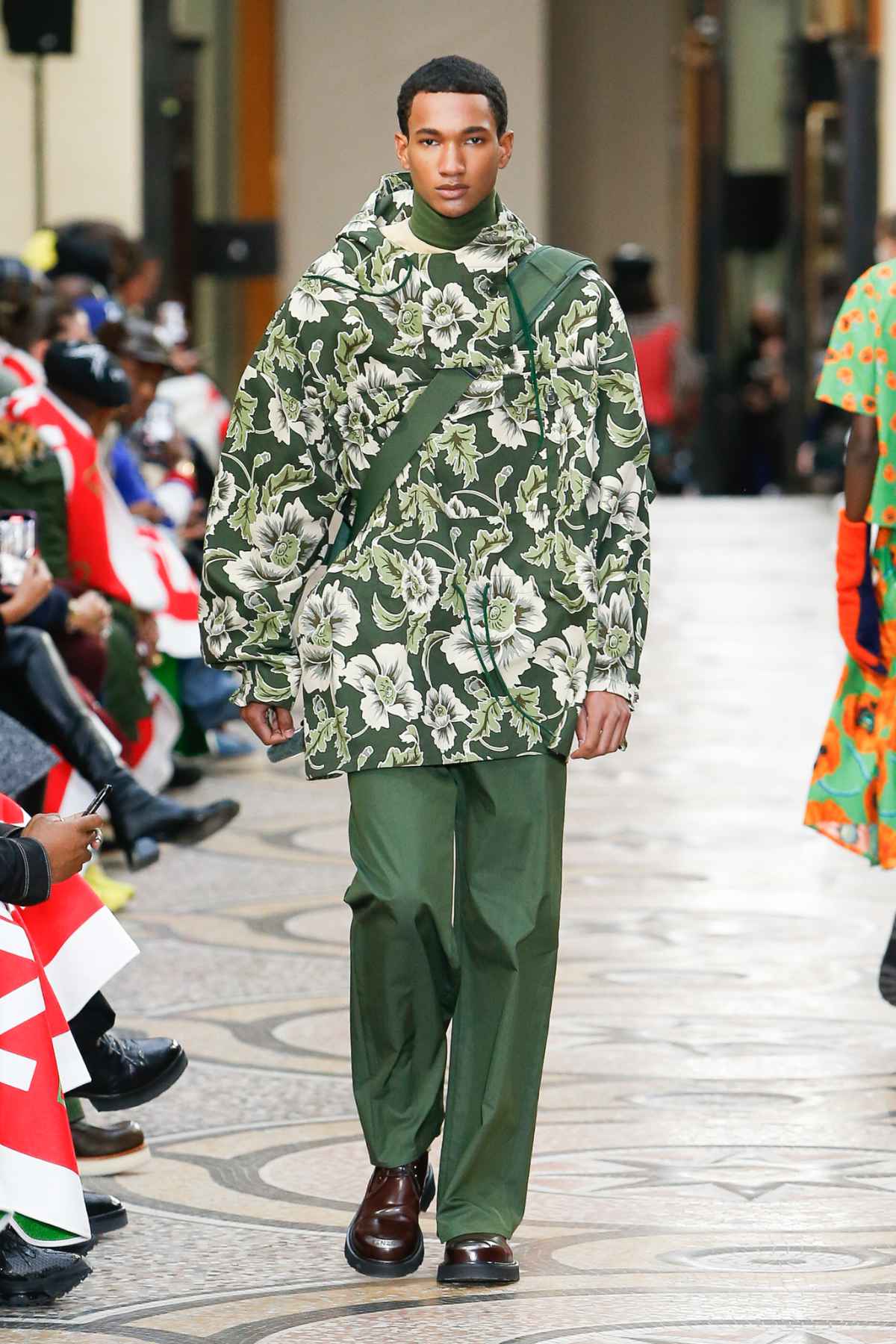
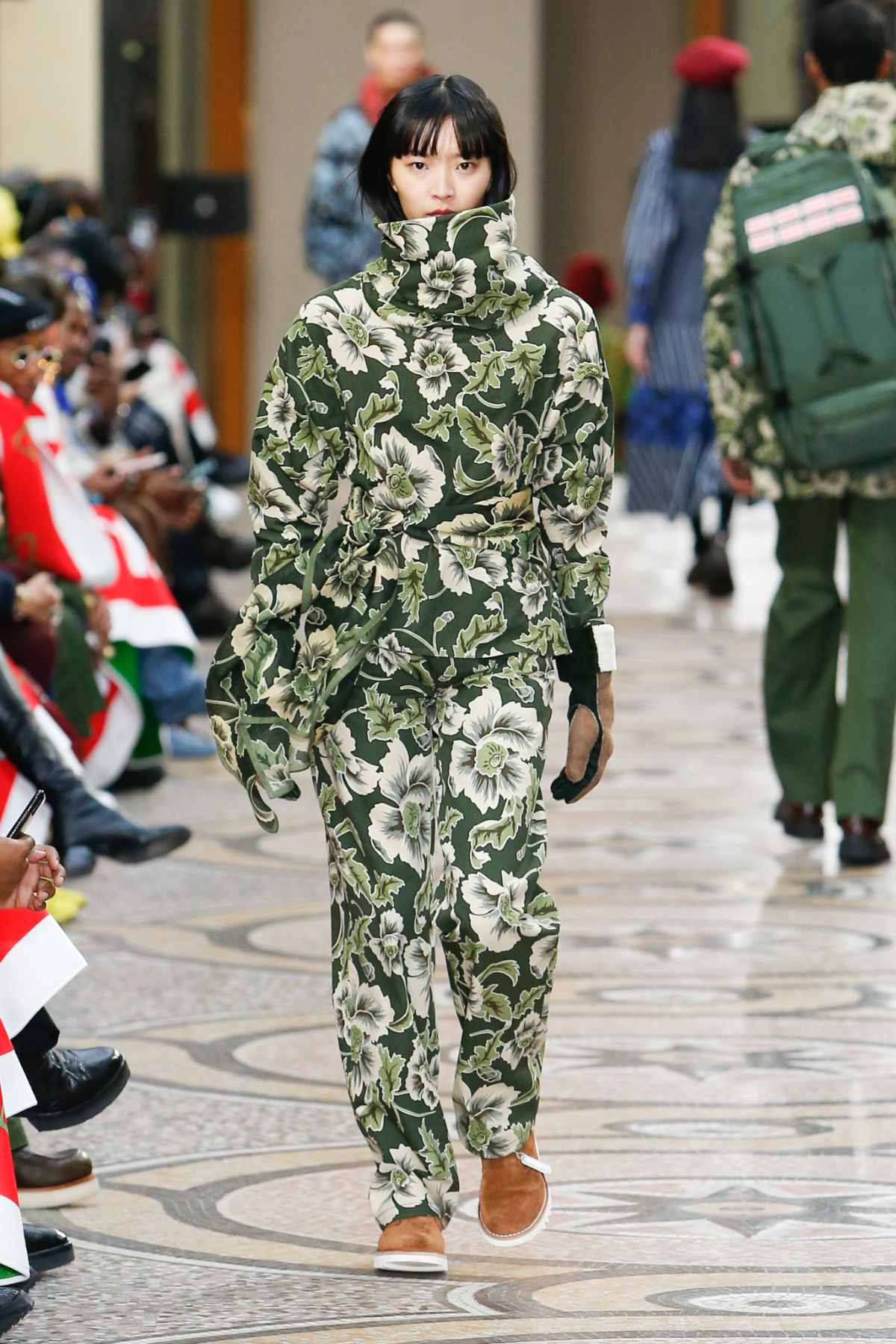
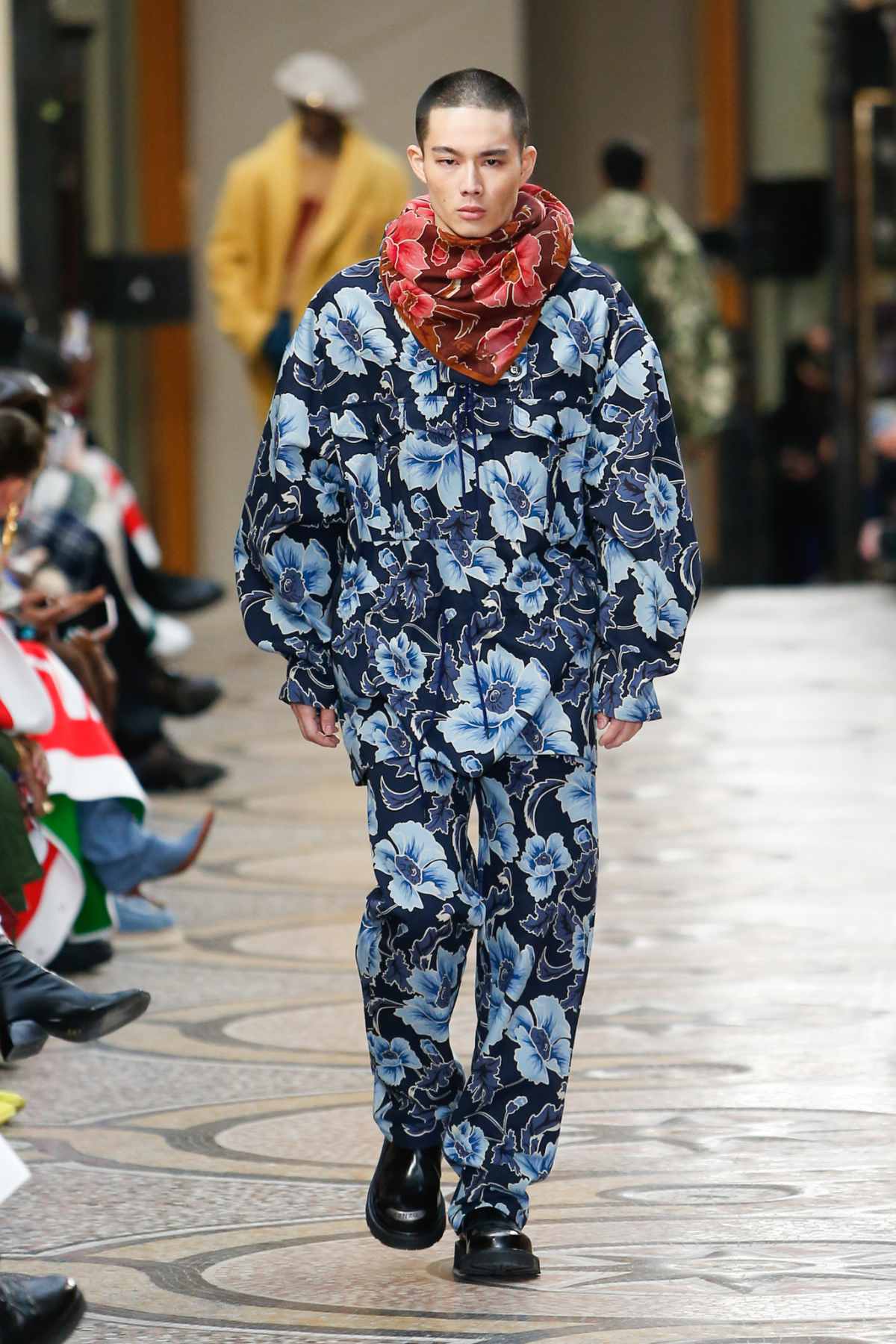

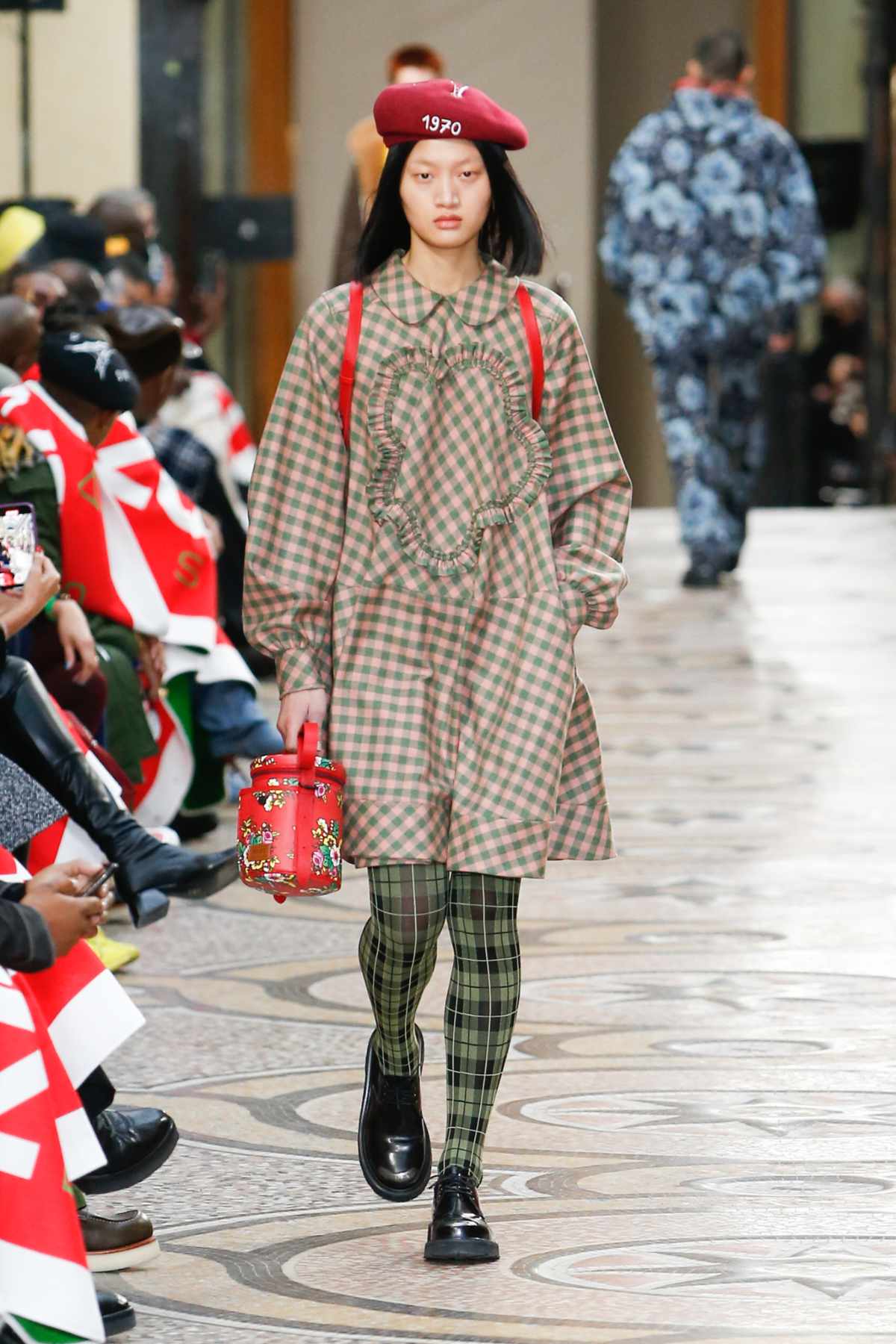
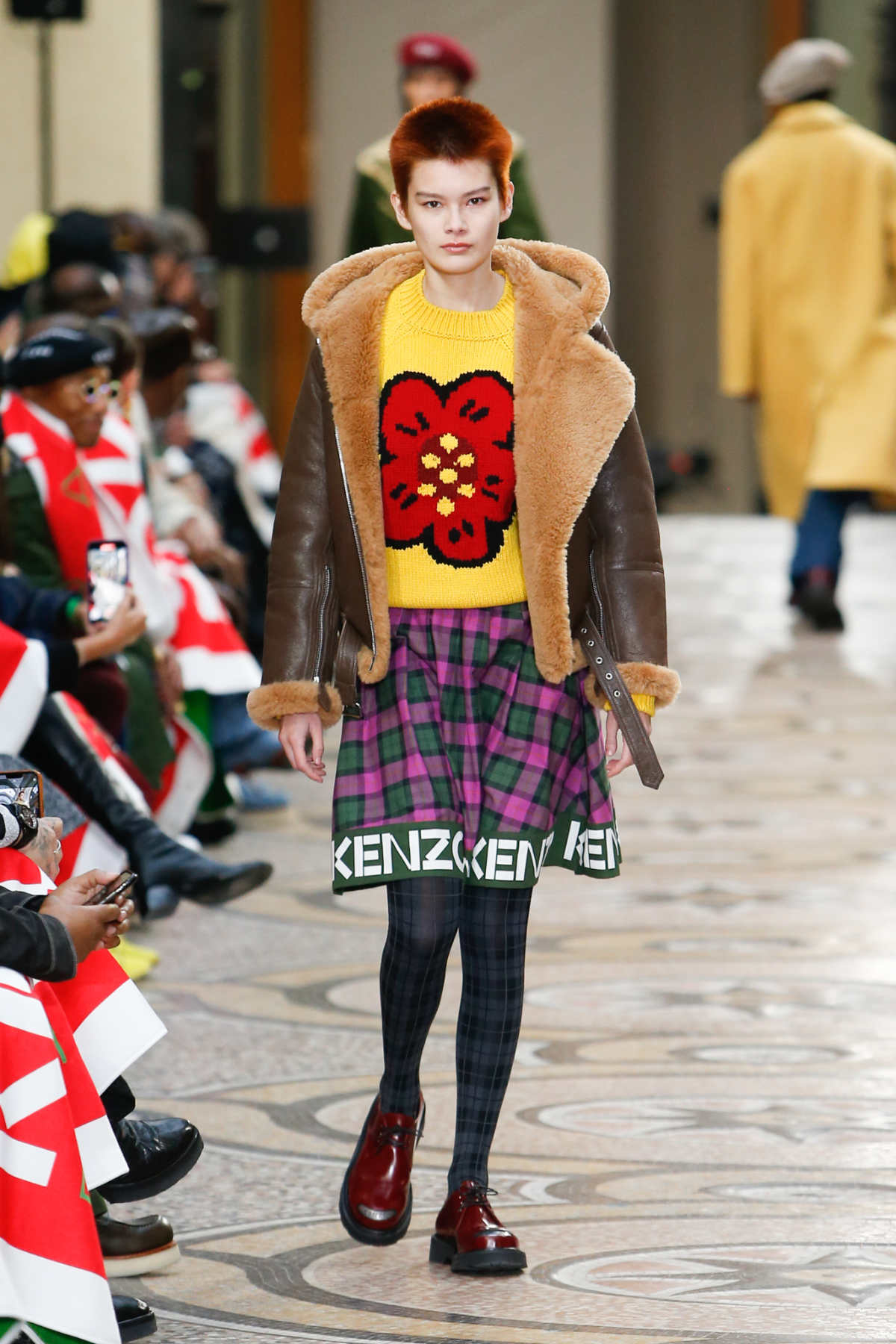
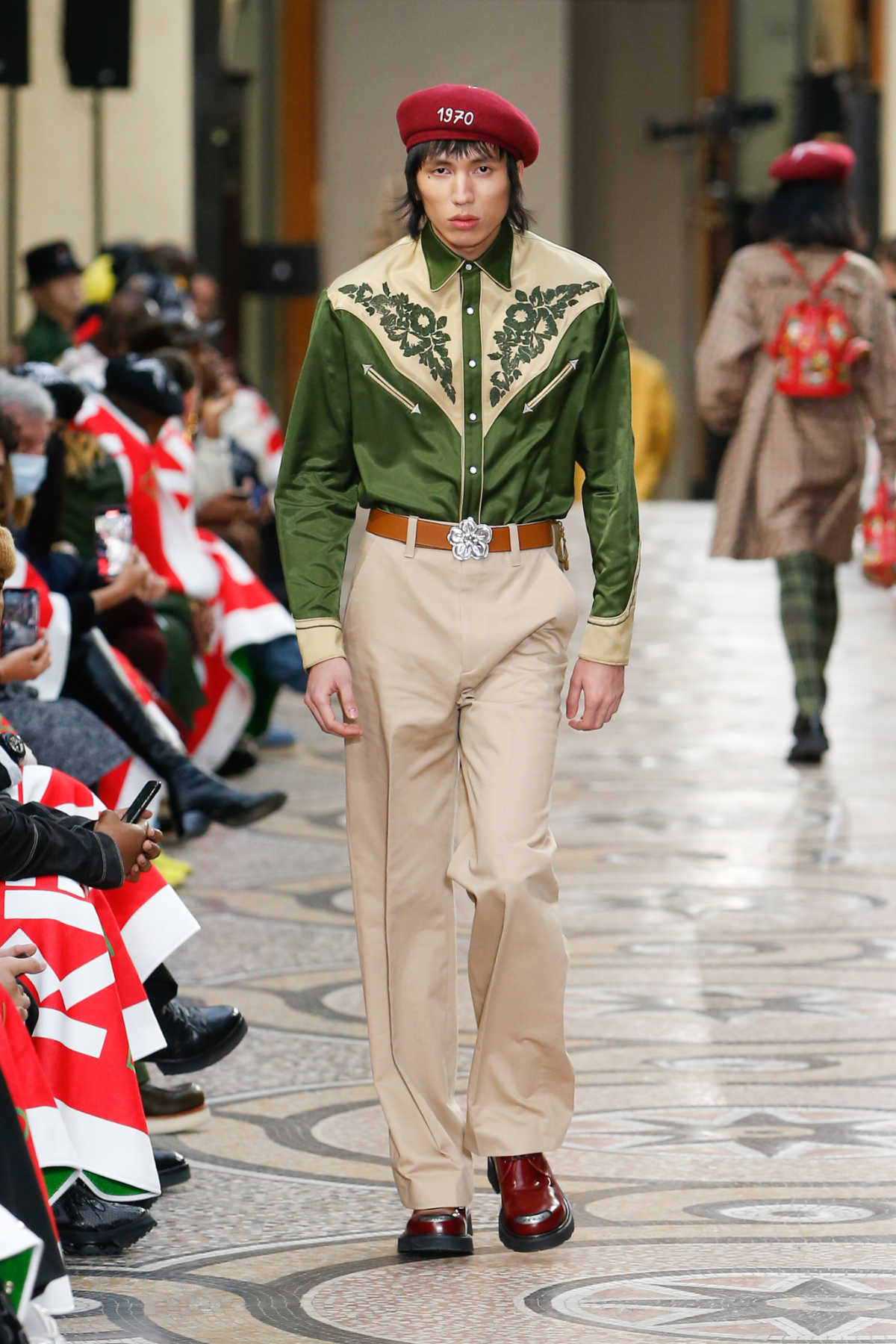
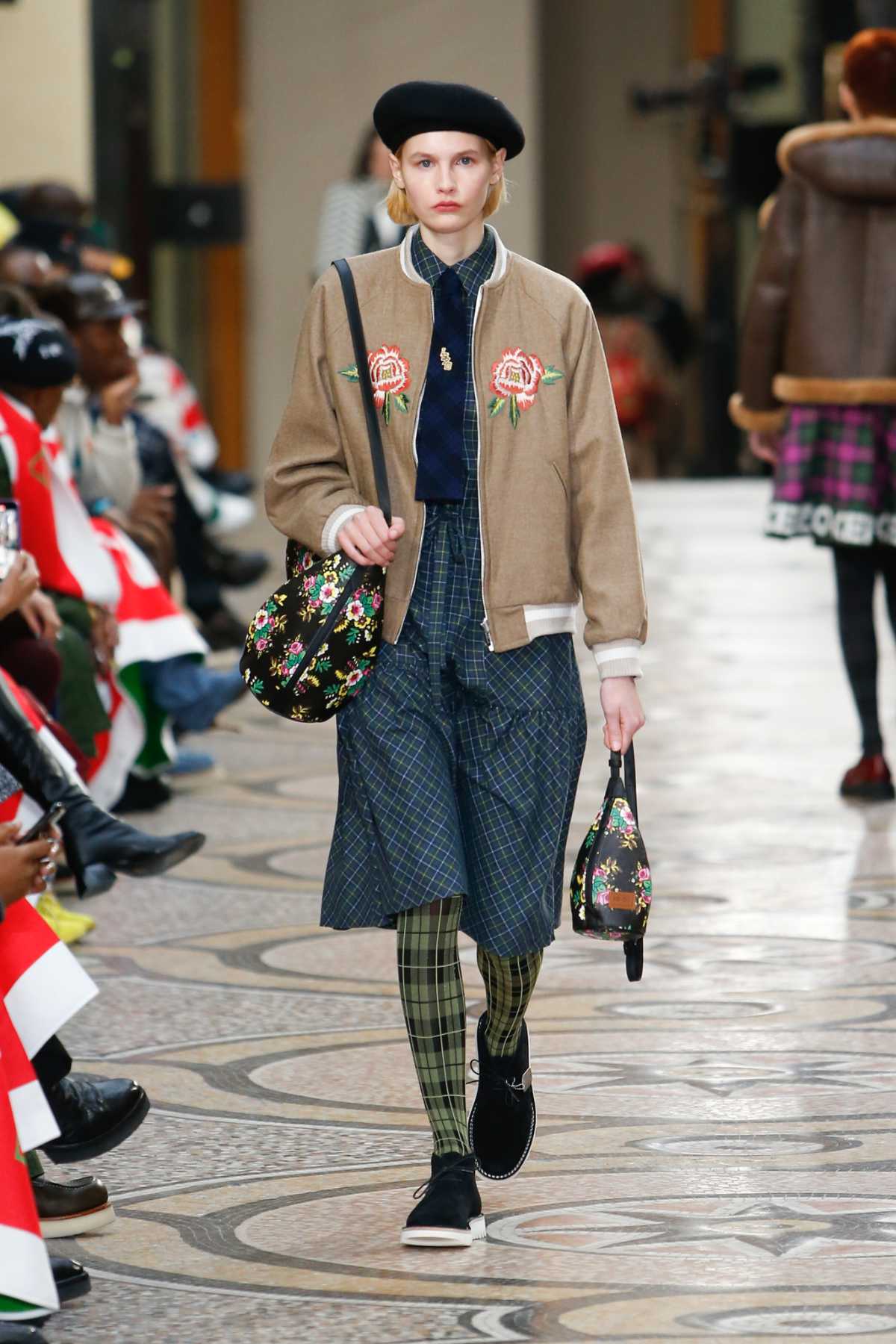
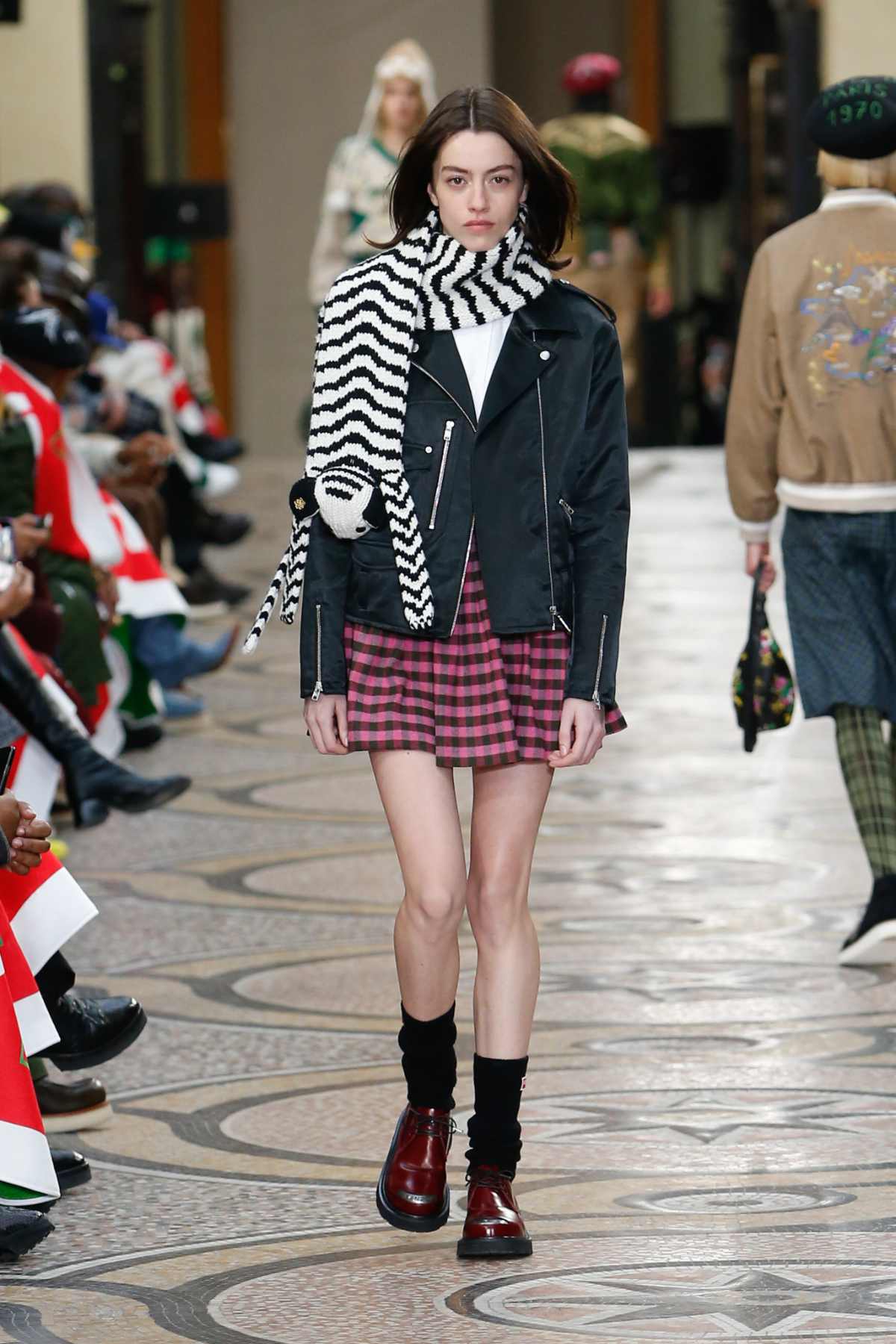


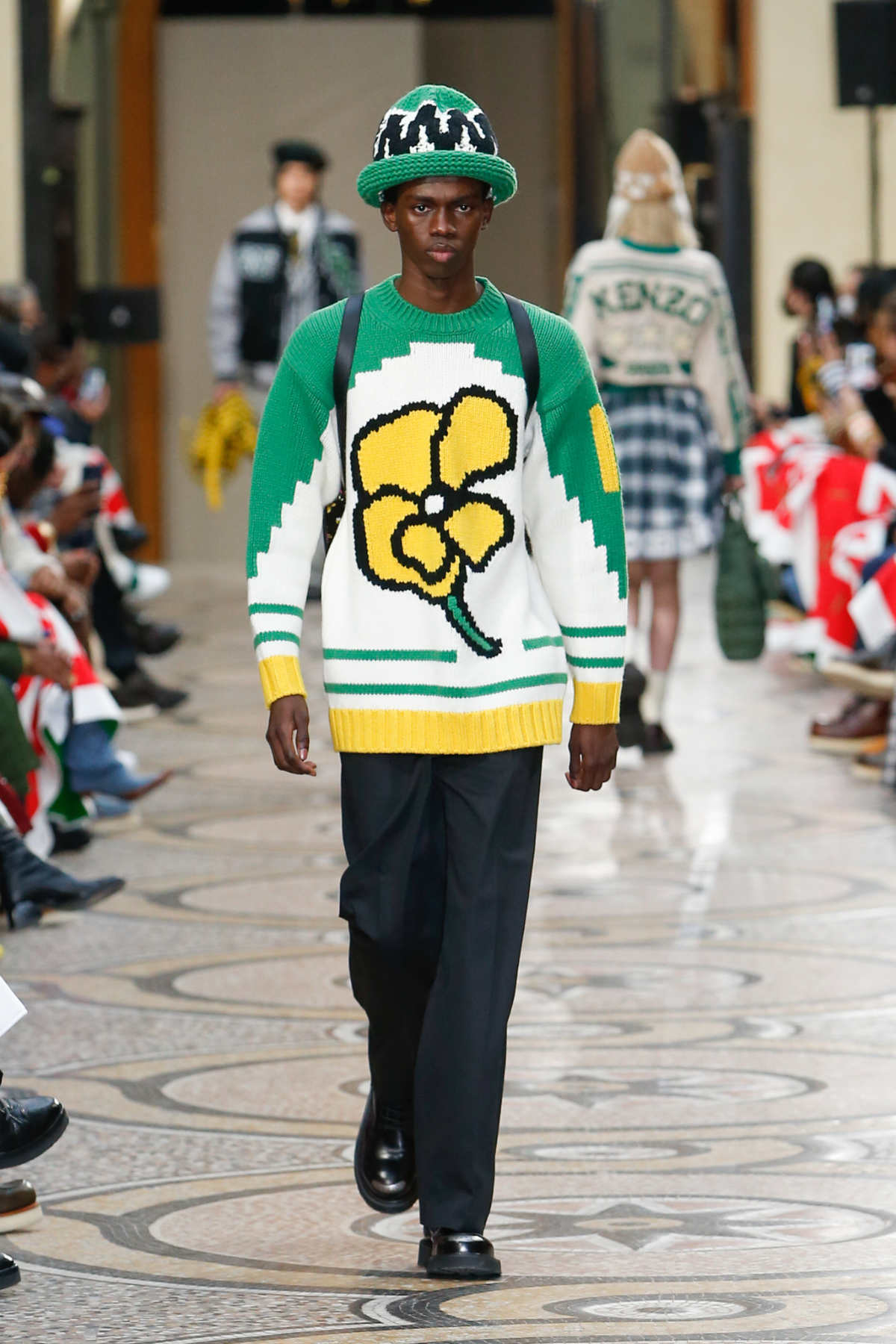
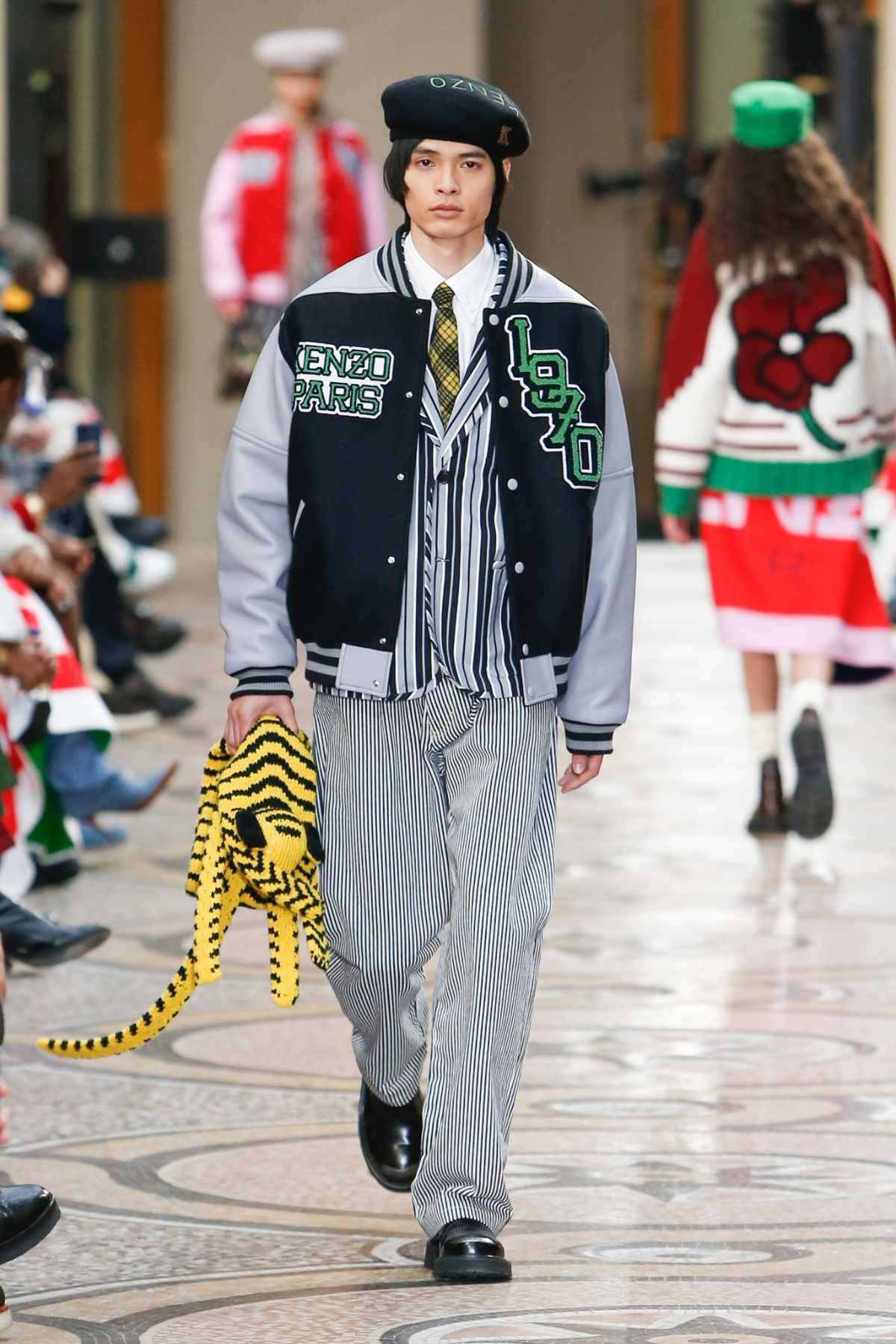
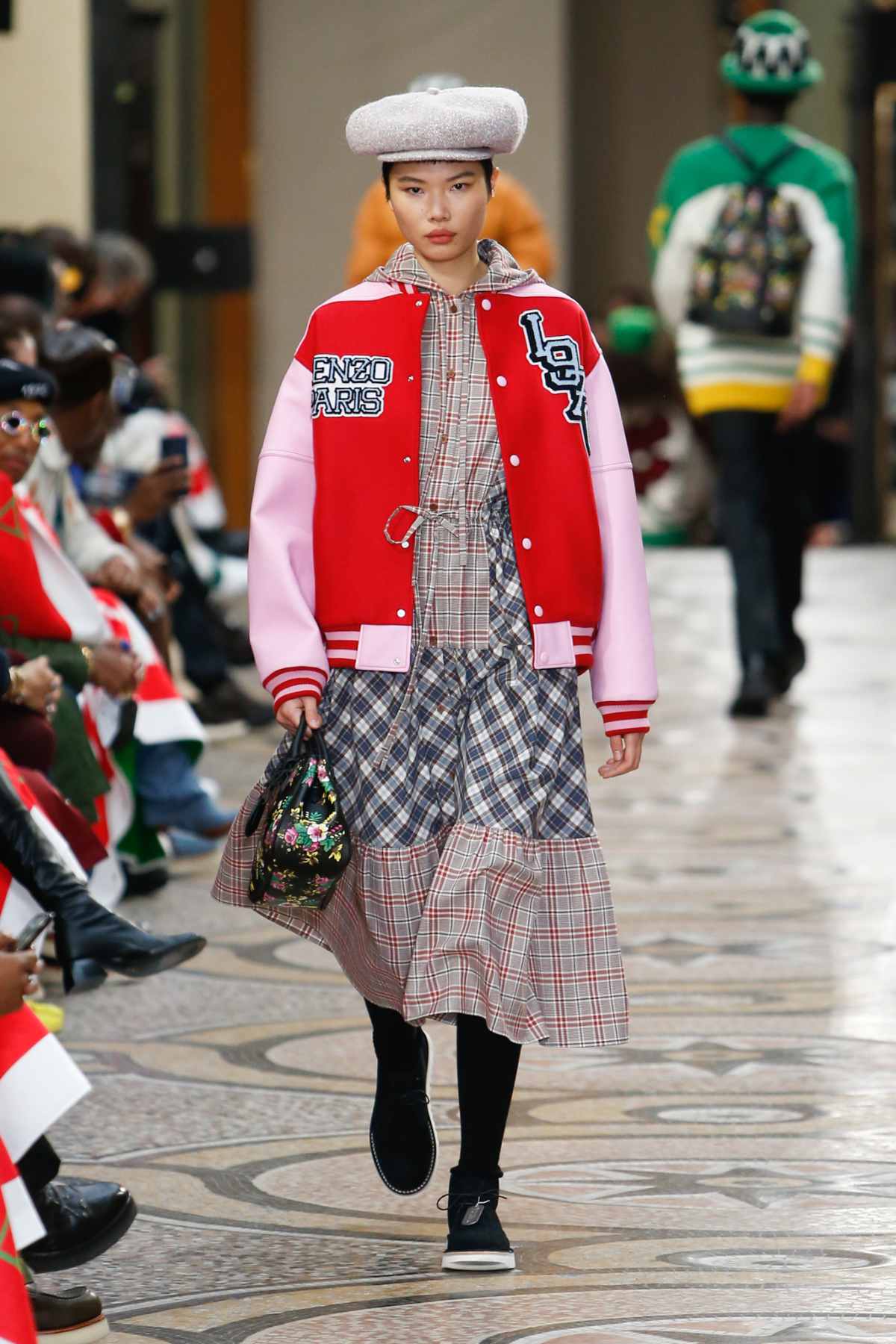

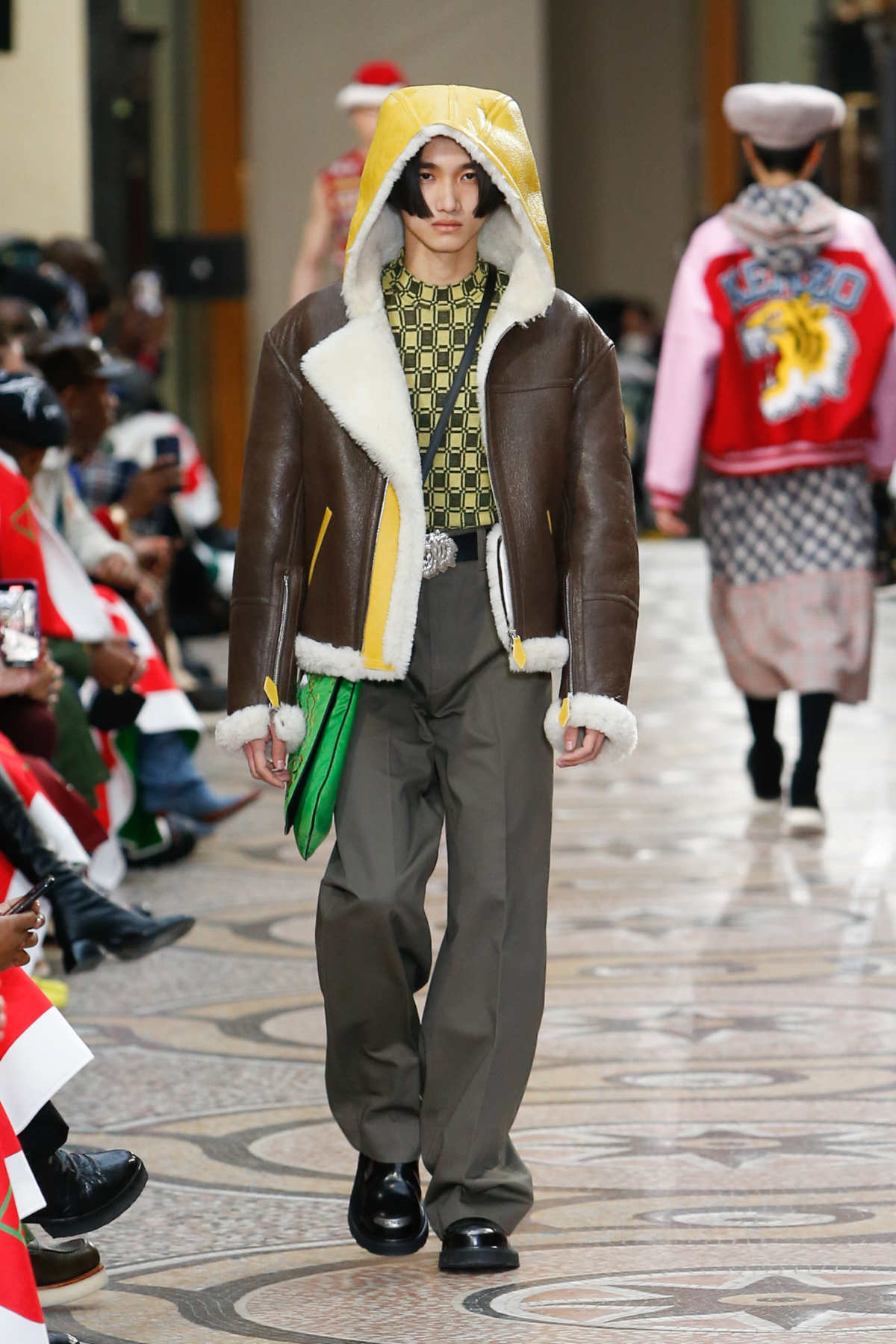
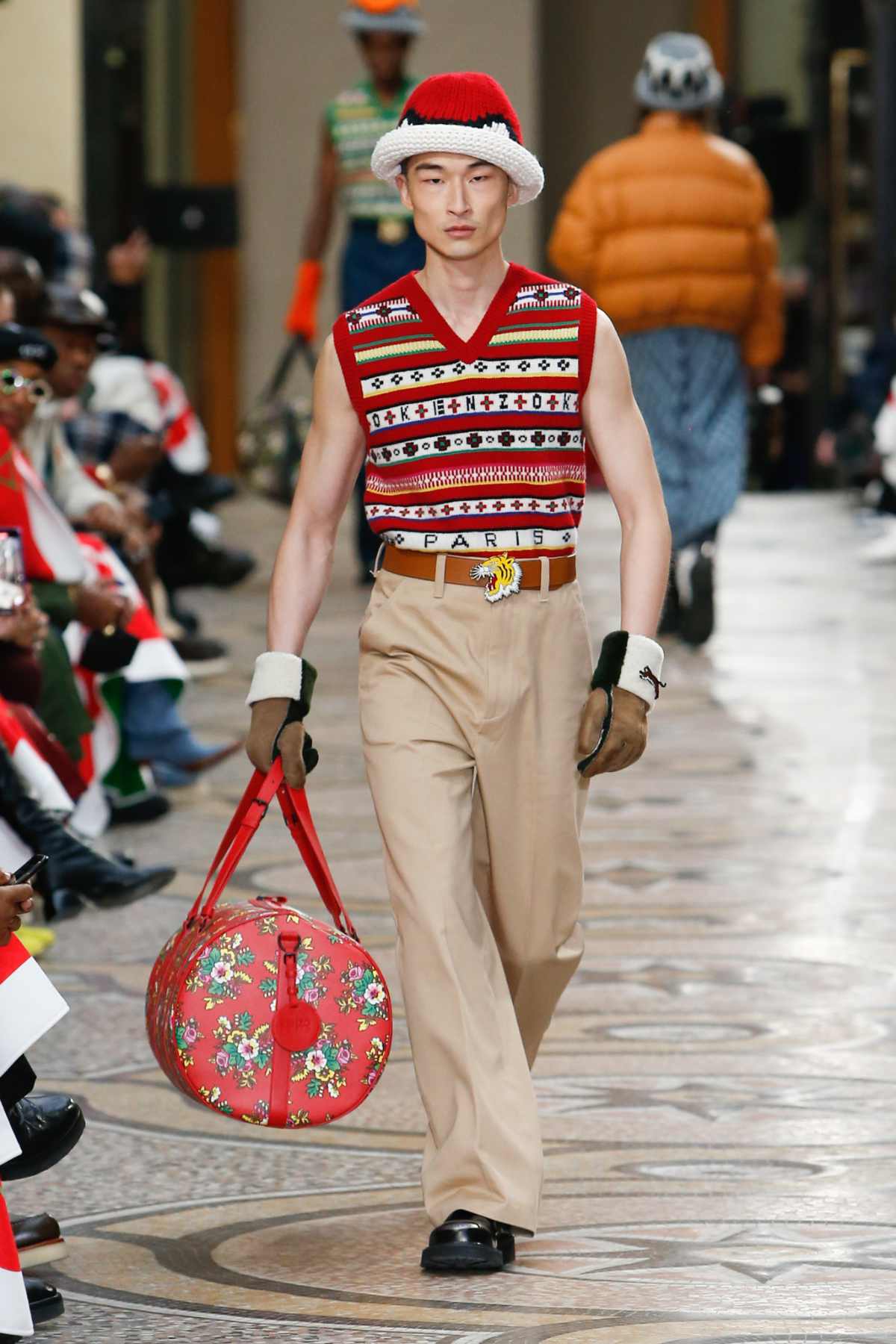
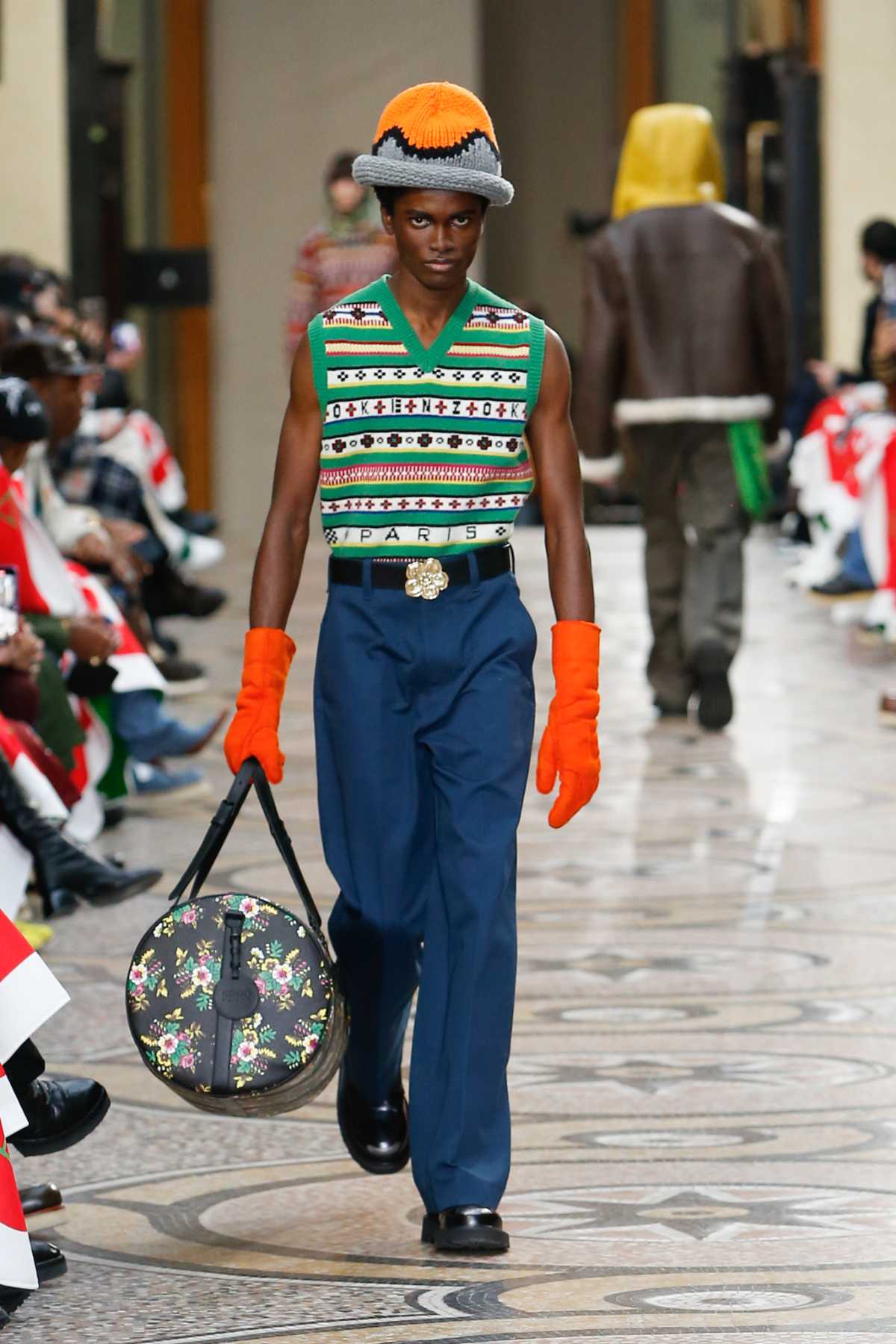
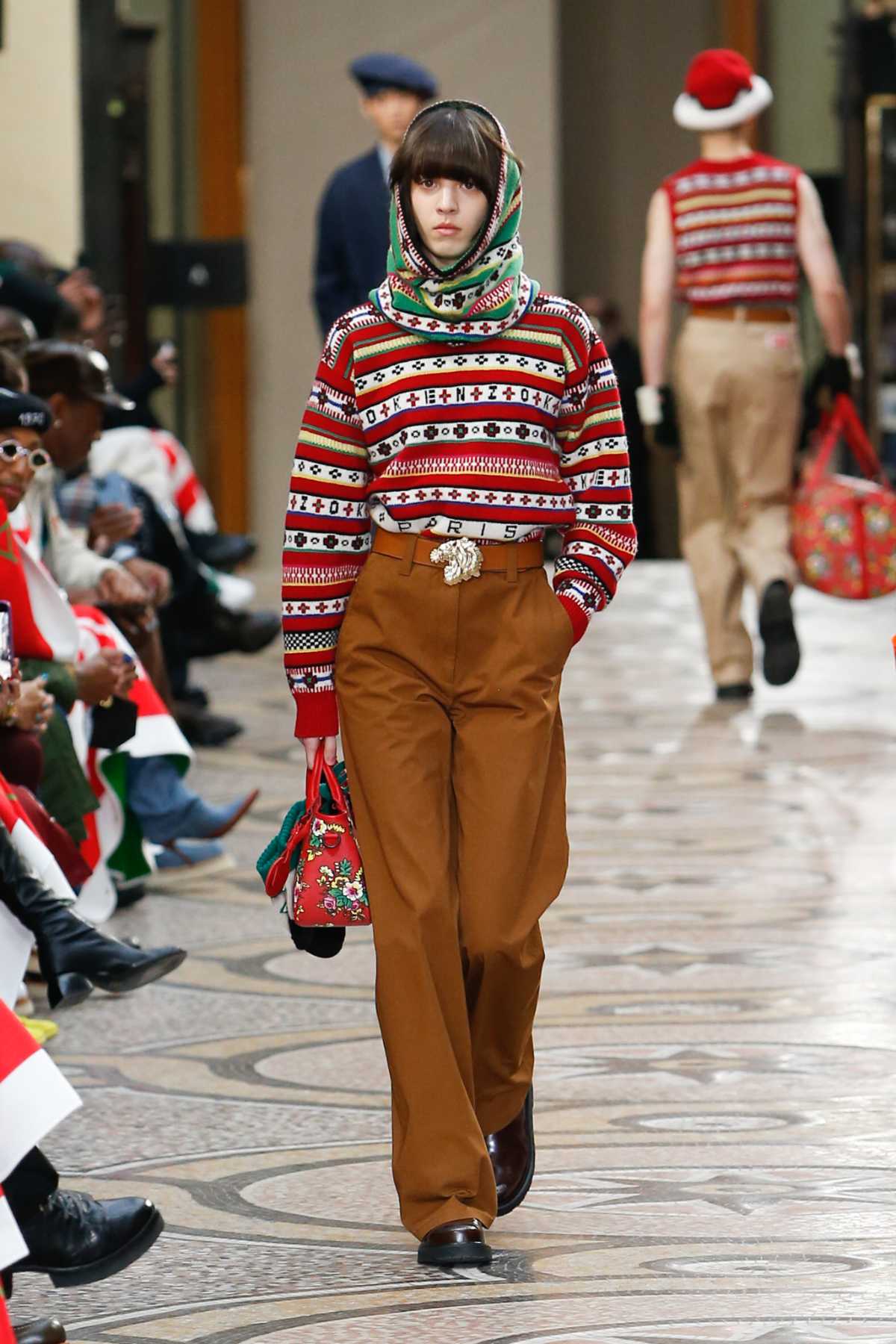
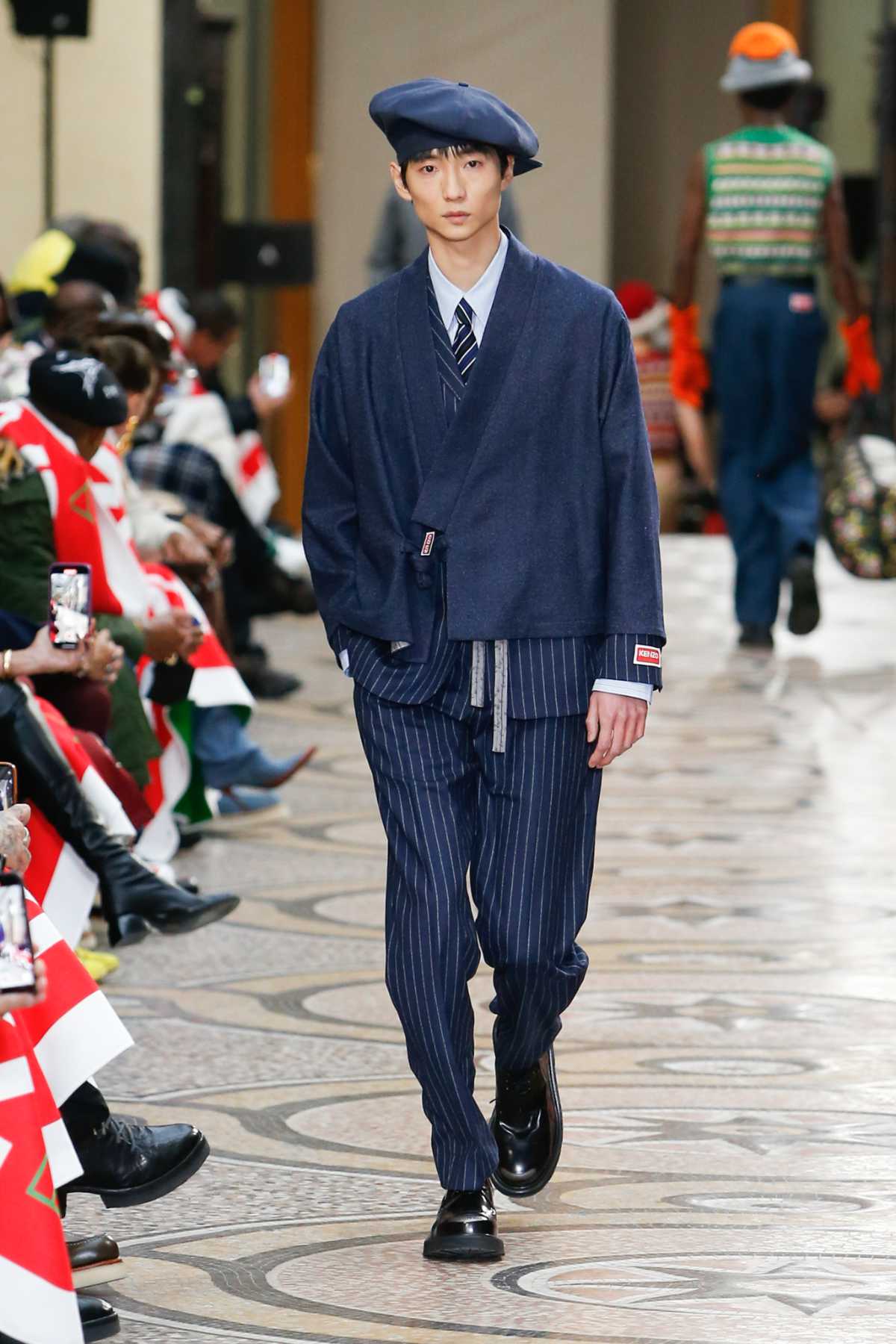
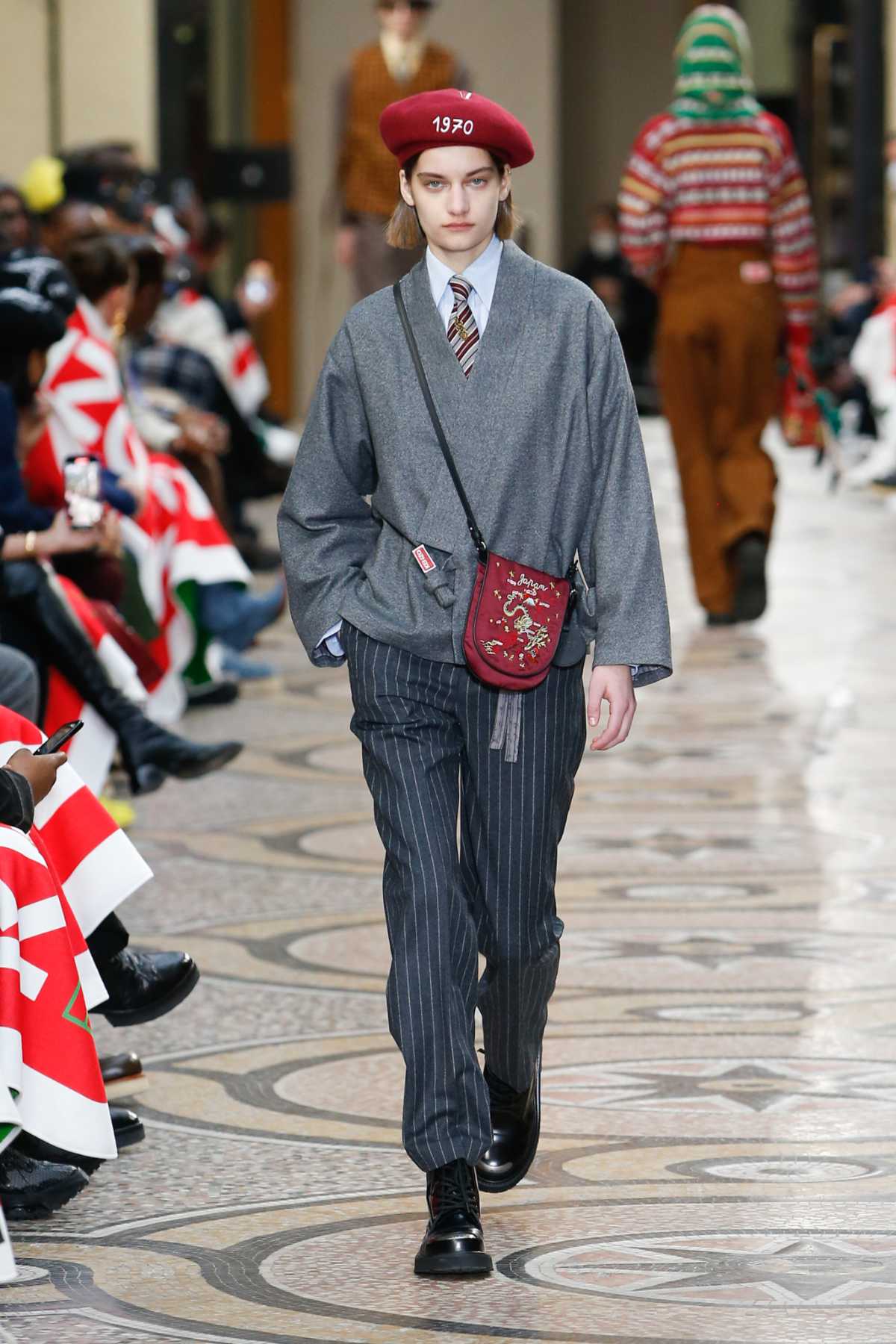

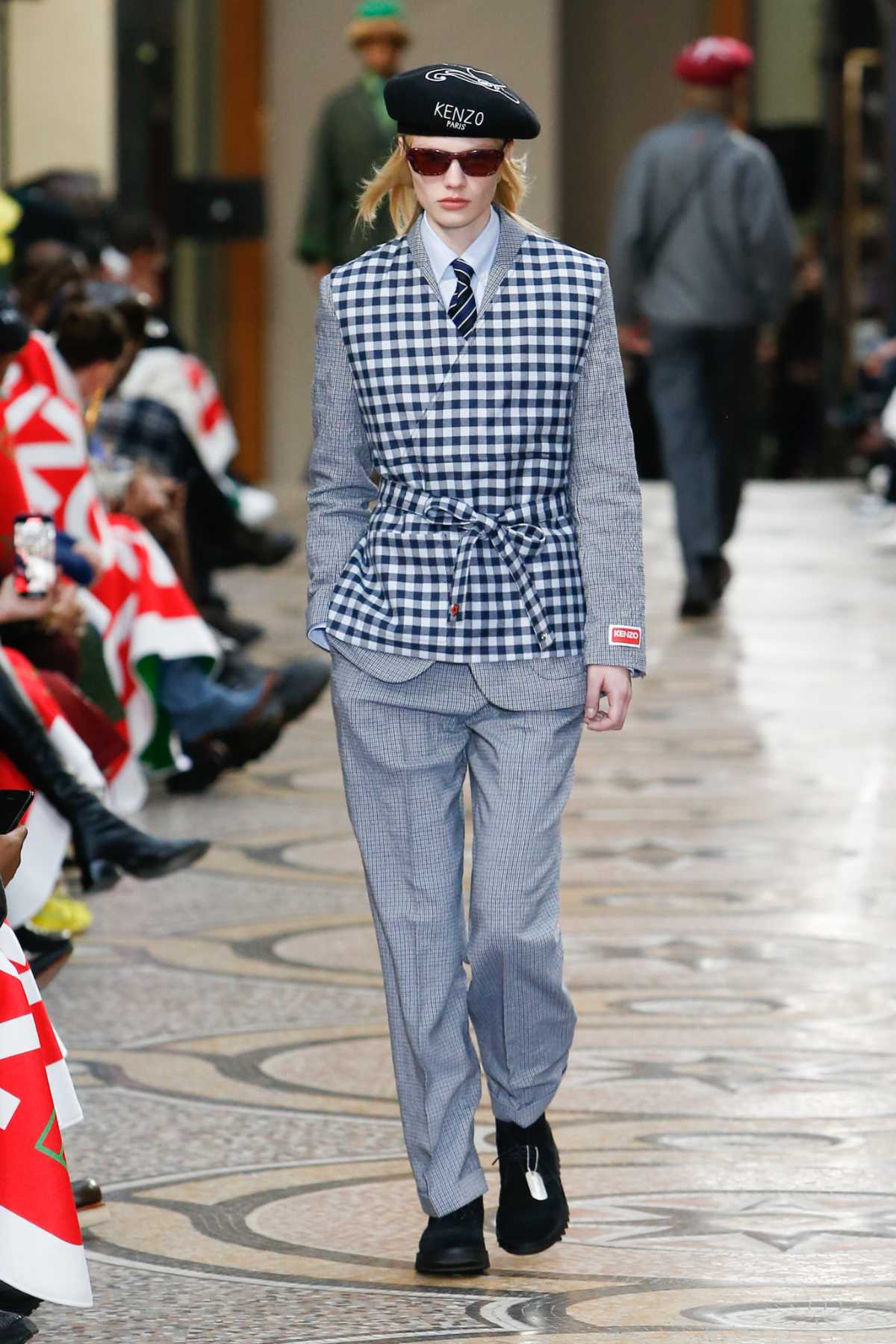
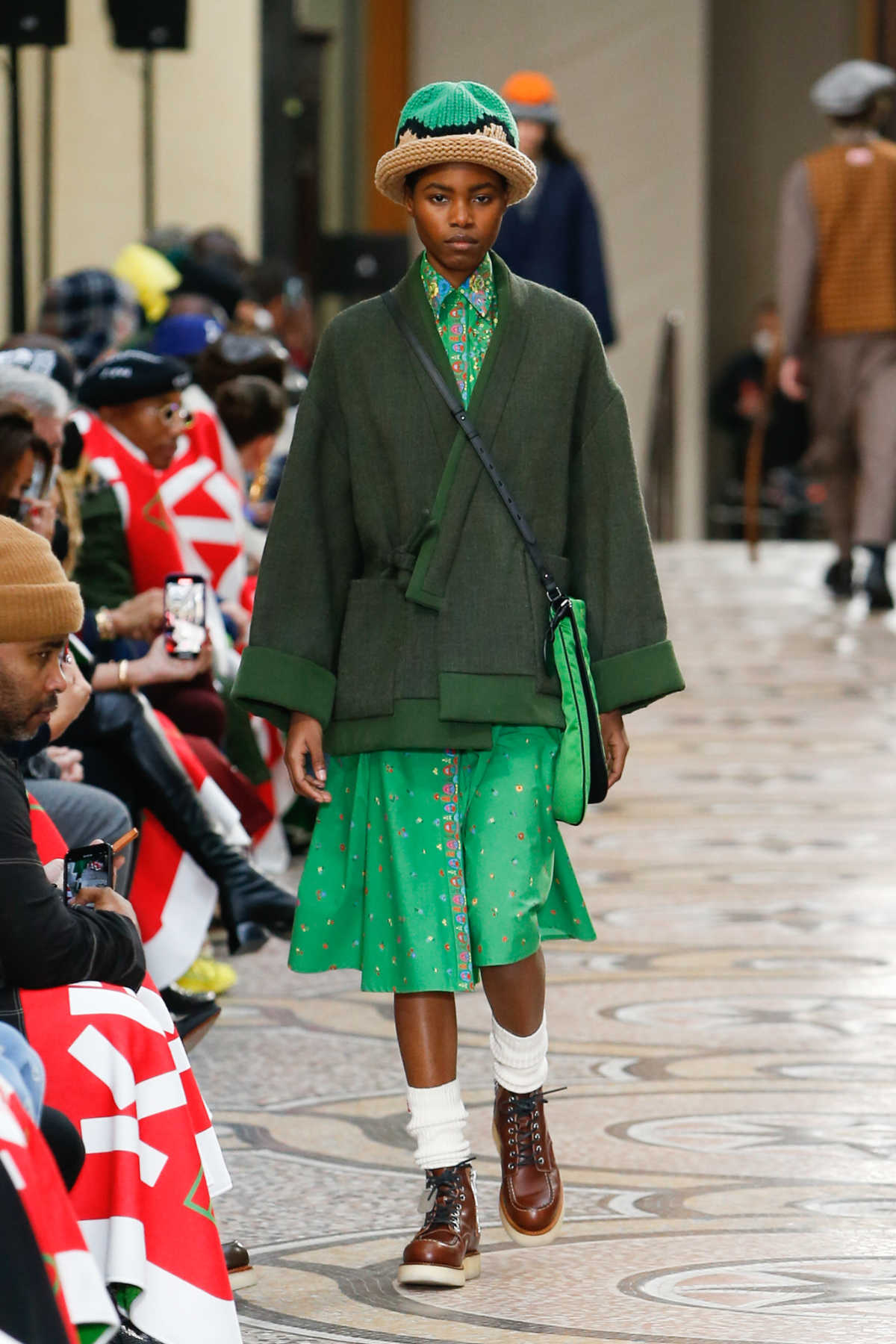
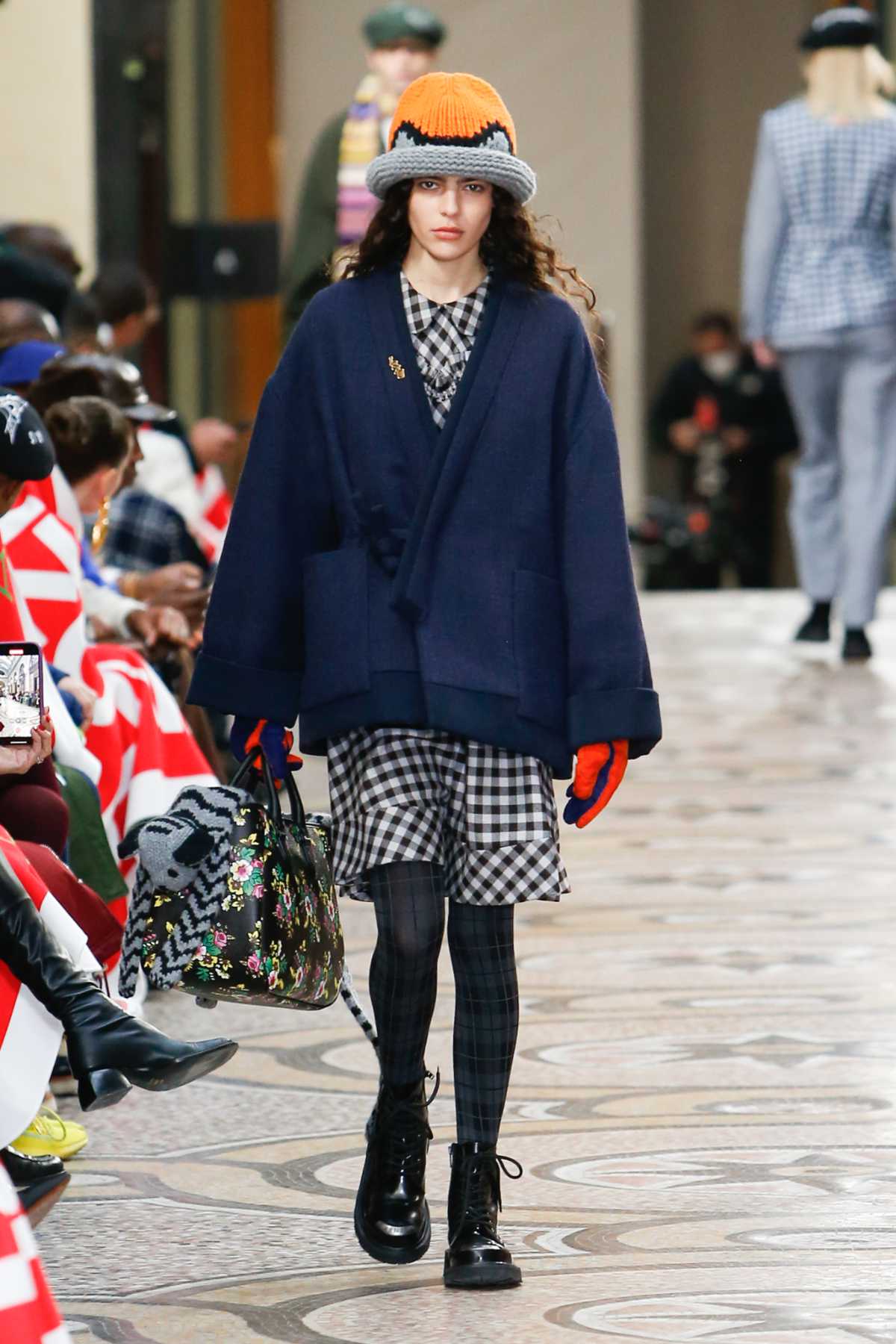
Credits
Production by Back of the House
Music - Exclusive mix from “I Know Nigo” Album, Victor Victor Worldwide
Content production by Kitten
Styling by Marq Rise
Casting by Samuel Ellis Scheinman for DM CASTING
Make up by Lucy Bridge and the Make Up For Ever team
Hair by Eugene Souleiman
Nails by Ama Quashie using Dr Barbara Sturm












